This post is a selection of artworks by artist Lawrence Alma-Tadema. In his life, he produced at least 362 artworks. In the art world, he is classified as a “Netherlands Victorian Neoclassical, Olympian Classical Revivalist painter and draftsman”. He was born 1/8/1836 and died 6/28/1912. His works are awesome.
There is no other way to say this. His works, each and every single one of them, are masterpieces. These little tiny pictures just do not do them justice. You need to go and see the HD version and look at the details close up.
He is stunning and his works are wonderful. It has been said by “art experts” that they are “cold, sterile, and obsolete” and not deserving presentation in a museum. But I disagree with that perception. I find them intriguing, worthy of contemplation, and physically beautiful. I had the opportunity to see of his his works up from and close, and the level of detail astounded me.
Here is only a small tiny overview of some of my favorites. Since he painted in enormous canvases, the level of observed detail here is just pitiful. You all should see his works up close and in all it’s amazing and glorious detail.
Rather than discuss the emotions garnered by the expressions on the canvasses of James Jacques Joseph Tissot, instead I will emphasize the period histories behind the works. Here, once you know the history behind the illustrations of the art, will you really start to see and understand the 5-D beautify and complexity of the work.
You can go ahead and see all of his works at the Art Renewal Center here.
The Roses of Heliogabalus
We will start with this stunning work.
Elagabalus or Heliogabalus was the emperor of Rome from 218 to 222. Though his reign was a very short one, he is remembered in history for being one of the most eccentric and vulgar emperors of all time. He was related to the imperial Severan dynasty of Rome through his mother. -Elagabalus Biography
Lust, Gluttony, and Sloth. Three of the Seven Deadly Sins are depicted in Sir Lawrence Alma-Tadema’s The Roses of Heliogabalus.
Many other sins are depicted alongside these cardinal vices making this an extremely wicked painting.
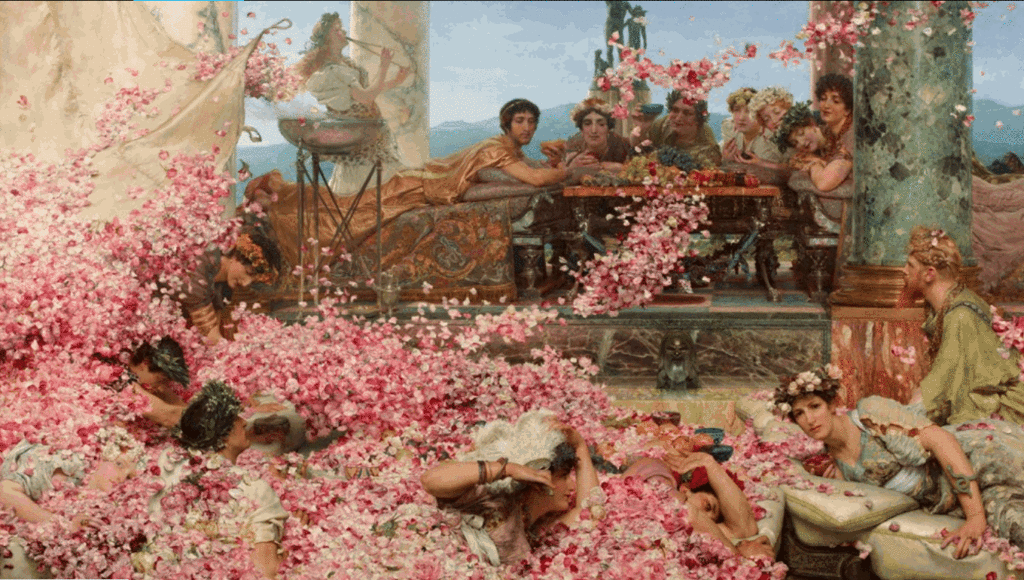
Ah…
But what’s the story about all the flowers and the flower petals?
Listen up.
While the late Victorian world was morally prudish and clad in dark velvets, late Victorian paintings were often morally bankrupt and clad in light silks. Academic paintings were all the rage, and they frequently used juicy historical anecdotes for the basis of their subjects.
The Roses of Heliogabalus is no exception.
This painting depicts an infamous party scene hosted by Emperor Heliogabalus.
The Roman emperor lays nonchalantly, drinks his wine, and observes as his guests below are smothered to death by rose petals. This is the ultimate party prank. This is the ultimate Roman death.
What?
Death by flower petals!
Yes. That is exactly what happened.
The Roman emperor, after a day / night of eating, drinking and orgies had all the attendees die through suffocation of tiny flower petals.
No. I am not kidding.
…
Sir Lawrence Alma-Tadema painted The Roses of Heliogabalus in 1888 when the British Empire was at its peak of power and influence. The Victorians were the undisputed rulers of one-fourth of the world’s land, and the phrase, “The sun never sets on the British Empire,” was penned to describe such a global domain that practically had territories in every time zone.
The British were proud of their international power, uniting vast regions under the British flag.
Because of their vast dominion and unrivaled prosperity, the Victorians viewed themselves as the inheritors of the former Roman Empire. They believed they brought civilization to the uncivilized, manners to the unmannered, and morality to the immoral.
Therefore, with a joyful backward glance, the Victorians reflected on Roman Imperial history with its peaks…
And with it’s pitfalls…
Emperor Heliogabalus was definitely a pitfall worthy of note.

Heliogabalus was a Roman Emperor who ruled from 218 to 222. In his short four-year reign he scarred Roman society and the annals of world history with his extremely debauched lifestyle.
Frequent scandals surrounded Heliogabalus due to his decadent lifestyle and his transgressions against sexual and religious norms.
He was an extremely unpopular emperor, and he eventually alienated everyone supporting his regime. His lifestyle must have been that ridiculously unacceptable because, after only four years of ruling, Emperor Heliogabalus was assassinated by his family, including his very own grandmother!
In The Roses of Heliogabalus, Sir Lawrence Alma-Tadema depicts one of the most infamous moments in the life of Emperor Heliogabalus.
…
It is recorded in the Historia Augusta that Heliogabalus invited guests to his palace one evening to partake in his drinking party and orgy.
After several hours of drinking heaving wine and swapping sexual partners, his guests were hopelessly intoxicated and tired. They lounged listlessly around the room. While they were so delightfully glowing from the heavy drinking and amusing entertainment, the ceiling above them opened and flutterings of flower petals began to fall.
At first, the gentle wafting of petals added to the dream-like prettiness of the party. It perfumed the atmosphere with a slight floral scent. It heightened the senses and added pleasure to the moment.
More petals fell, and more, and more. The petals became a cascade of flowers. More flowers fell, and more descended upon the sleepy guests. A waterfall of petals erupted upon the helpless guests.
They were showered, covered, and blanketed.
Puddles formed into lakes that formed into oceans of petals. Hills had become petal mountains, and the guests were smothered under the endlessly growing sea of flowers.
They breathed… in the tiny petals…
…and they choked…
… gasping for air.
The tiny petals entered their lungs, and they died covered in floral glory.
The quickening smell of death was masked by the smell of flowers.
Floral perfume wafted from the human-infused mountains of flowers. Emperor Heliogabalus was amused by the floral carnage and continued to drink his wine.
Death was tonight’s real entertainment.
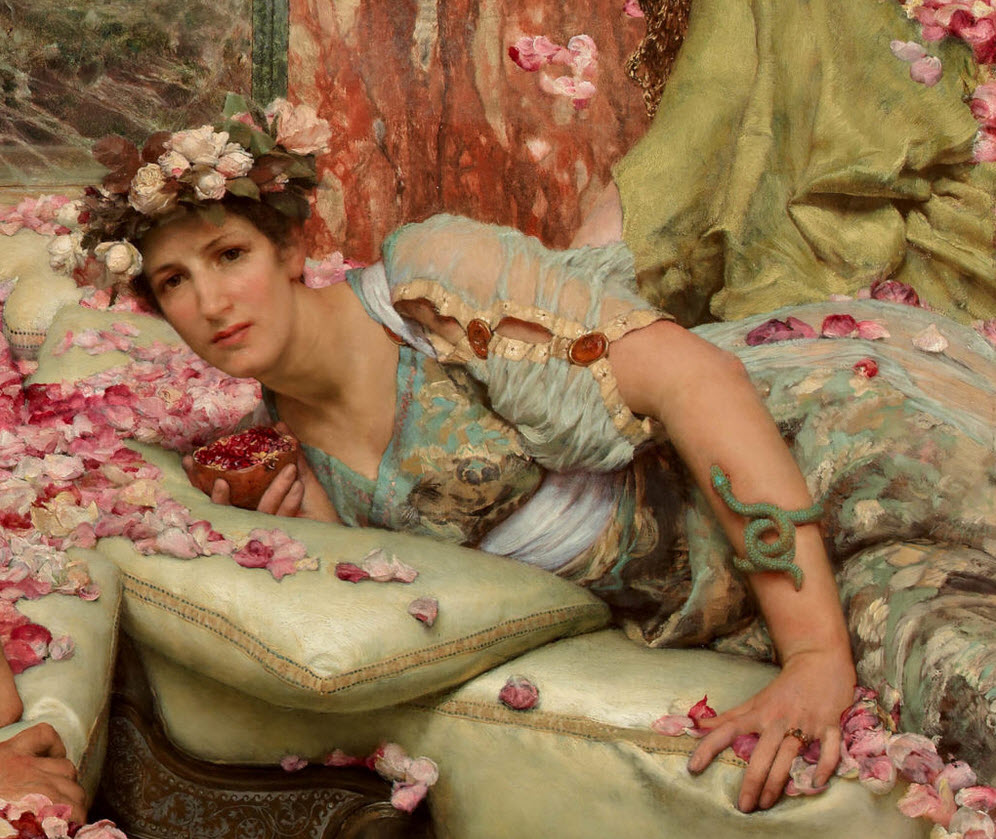
According to the original source, Historia Augusta, Emperor Heliogabalus used violets and other flowers to suffocate his dinner guests.
However, Sir Lawrence Alma-Tadema uses roses as his method of death.
During the late Victorian era, when Alma-Tadema painted The Roses of Heliogabalus, roses represented lust and desire in the Victorian language of flowers known as floriography.
In simple terms, floriography is the language of flowers. The language is spoken by selecting specific flower types with associated meanings to communicate feelings or wishes. Artists too have used floriography to communicate deeper messages in their work. Martin Johnson Heade (1819–1904), Victorian Vase with Flowers of Devotion. -Floriography: The Secret Language of Victorian Florals
Roses were a more appropriate flower for Alma-Tadema to paint because violets represented faithfulness and modesty in the Victorian floriography.
Emperor Heliogabalus was many things, but he was certainly not faithful and modest. Therefore Alma-Tadema smothers the guests of Heliogabalus in roses and not violets, and adds a contemporary meaning his audience would have recognized.
When Sir Lawrence Alma-Tadema displayed The Roses of Heliogabalus in the Royal Academy Summer Exhibition of 1888, it was warmly received by the public.
The public appreciated classical-inspired scenes especially if a moral story could be interpreted.
Remember, this is the Victorian era, and unpunished vice would not be tolerated!
The public easily interpreted Alma-Tadema’s symbolism and message: as the guests’ lust was smothered by the lustful rose, so does lust smother the virtuous soul. A contemporary message was conveyed using an ancient anecdote.
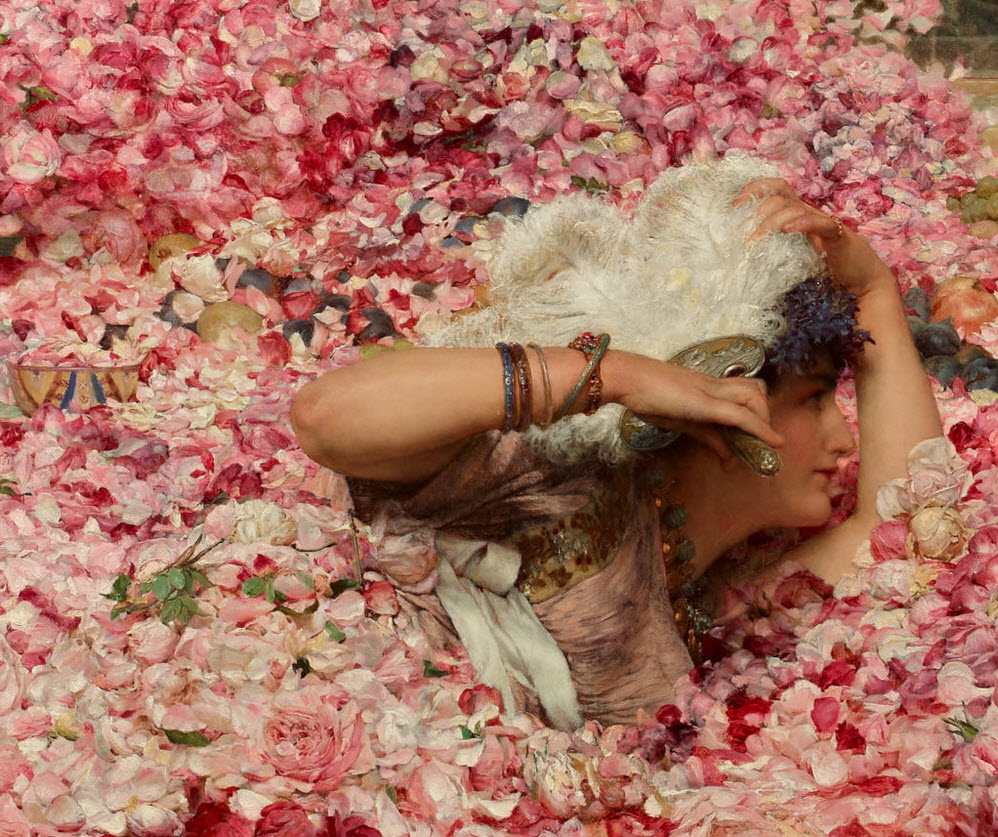
A contemporary message could command a contemporary price. When Sir John Aird, 1st Baronet, commissioned Sir Lawrence Alma-Tadema to paint The Roses of Heliogabalus, he paid Alma-Tadema 4,000 GBP.
The price of 4,000 GBP in 1888 would approximately be 150,000 USD in 2020.
Alma-Tadema was an appreciated artist in his time, and the price reflects the four months it took Alma-Tadema to create this great work.
What is sad is that shortly after Alma-Tadema’s death in 1912, his works and the Academic Style quickly fell out of favor with the public.
The social changes brought by WWI, the 1920s, and the Great Depression culminated in his works being quickly forgotten and ignored. It was not until the 1960s that his works and the Academic Style began to be reevaluated for their stylistic majesty and clarity.
The Academic Style is still being reevaluated today, and while it is not as popular as other styles of the same timeframe like Pre-Raphaelites, Impressionism, and Arts & Crafts, the Academic Style has its own masterpieces like Sir Lawrence Alma-Tadema’s The Roses of Heliogabalus.
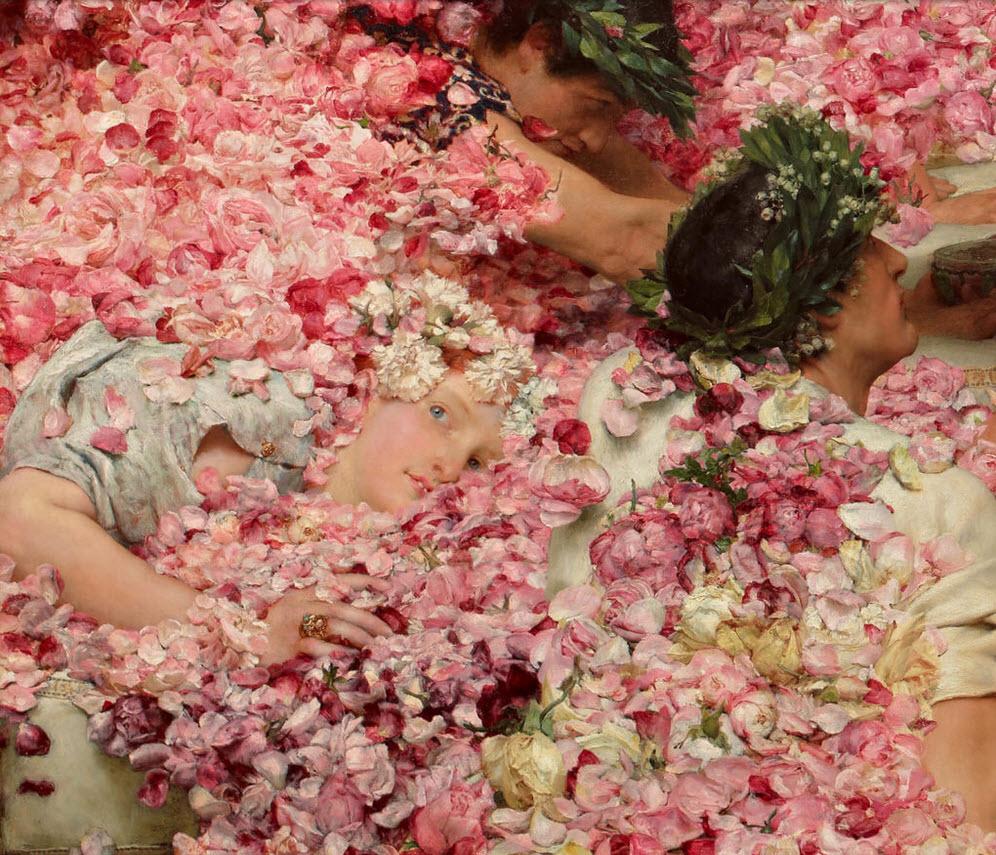
Sir Lawrence Alma-Tadema fuses Victorian morality and symbolism with Roman Imperial history in The Roses of Heliogabalus.
- It brings to life a moment from one of Rome’s most hated and reviled emperors.
- It brings ancient history to a contemporary audience.
- It makes it both entertaining and educational.
- Who knew that a Roman Emperor literally smothered his dinner guests with flowers?
We have Sir Lawrence Alma-Tadema to thank for capturing that humorous anecdote to enliven our next dinner party. The Roses of Heliogabalus is a history lesson on canvas. It is the ultimate party prank. It is the ultimate Roman death.
Antony and Cleopatra
Well, everyone knows about Antony and Cleopatra, right? There was a movie, or two, or three, or four… about the couple.
- Cleopatra (1912) – IMDb
- Cleopatra (1920) – IMDb
- Cleopatra (1963) – IMDb
- Antony and Cleopatra (1972) – IMDb
- Antony and Cleopatra (TV Movie 1984) – IMDb
- Cleopatra (1999) – IMDb
- Stratford Festival: Antony and Cleopatra (2015) – IMDb
- National Theatre Live: Antony & Cleopatra (2018) – IMDb
Well…
Forget the movie. Let’s consider history.
Regarded by the Romans as “fatale monstrum”- a fatal omen, Cleopatra is one of the ancient world’s most popular, though elusive figures.
The pregnant phrase fatale monstrum comes at a crucial point in the third and longest of the three sentences of the ‘Cleopatra Ode’. Before it Cleopatra is being hissed from the stage of history with cries of disapproval; after it she is recalled to receive plaudit after plaudit for her courage and resolution. -Cleopatra as Fatale Monstrum (Horace, Carm. 1. 37. 21 ...
The Egyptian Queen has been immortalized by numerous writers and film-makers, most popularly by Shakespeare in Antony and Cleopatra, and by Hollywood in Cleopatra (1963) starring Elizabeth Taylor and Richard Burton.
The latter work features the memorable image of the enticing young Cleopatra emerging gracefully from an unfurled carpet in front of Roman general Julius Caesar.
But is Cleopatra to be regarded merely as the lover of Julius Caesar and Mark Antony? Or did she play an important role not only in the history of Egypt, but also in that of the mighty Roman Republic?
Cleopatra VII Philopator ('father-loving') was born in January 69 BCE in the city of Alexandria, Egypt, the daughter of Ptolemy XII Auletes (117 BCE –51 BCE) and possibly Cleopatra V Tryphaena (c. 95 BCE – c. 57 BCE).
Cleopatra was to become the last monarch of the Ptolemaic Empire (established in 323 BCE after the death of Alexander the Great), ruling Egypt from 51 BCE to 30 BCE.
In 48 BCE Cleopatra had become an ally and lover of Julius Caesar and remained so until his assassination in Rome in March of 44 BCE.
The death of Caesar threw Rome into turmoil, with various factions competing for control, the most important of these being the armies of Mark Antony (83 BCE– 30 BCE) and Octavian (63 BCE – 14 CE), the former a supporter and loyal friend Caesar, the latter his adopted son.
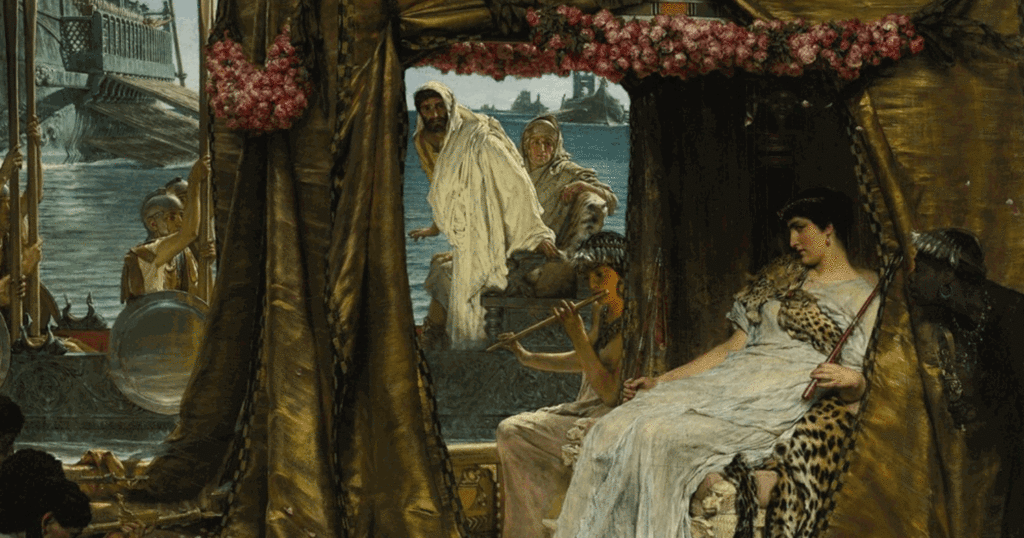
In 41 BC Cleopatra was summoned to Tarsus (in modern southern Turkey) by Mark Antony. She is said to have entered the city by sailing up the Cydnus River in a decorated barge. It was a barge with purple sails, all the time while dressed in the robes of the Greek goddess Aphrodite.
Antony, who equated himself with the god Dionysus, the Greek god of wine, was instantly won over.
Much like the meeting between Cleopatra and Caesar, both sides saw something in the other which they needed. For Cleopatra it was another opportunity to achieve power both in Egypt and in Rome, for Anthony the support of Rome’s largest and wealthiest client states in his campaign against the might of the Parthians (Parthia was a region in modern north-eastern Iran) was highly desirable.
At the meeting Cleopatra allegedly requested that her half-sister Arsinoë, living in protection at the Temple of Artemis at Ephesus, be executed to prevent any future attempts on her throne.
Anthony and Cleopatra soon became allies and lovers and he returned with her to Alexandria in 40 BCE.
In Alexandria Cleopatra and Antony formed a society of “inimitable livers”, which some historians have interpreted as an excuse to lead a life of debauchery, though it was more likely to have been a group dedicated to the cult of the mystical god Dionysus.
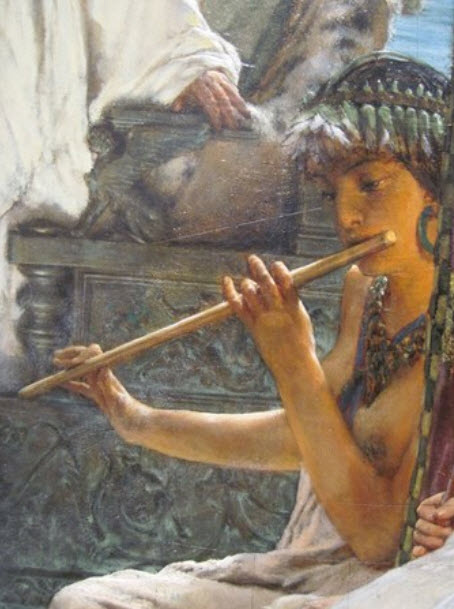
In that year Cleopatra bore Antony the twins Alexander Helios (the Sun) and Cleopatra Selene (the Moon).
The political situation in Rome compelled Antony to return to Italy where he was forced to conclude a temporary settlement with Octavian, part of which was that he married Octavian’s sister, Octavia.
It was to be three years before he and Cleopatra were to meet again, at the city of Antioch (near the modern Turkey / Syria border) under the shadow of the Octavian’s growing military power in the West.
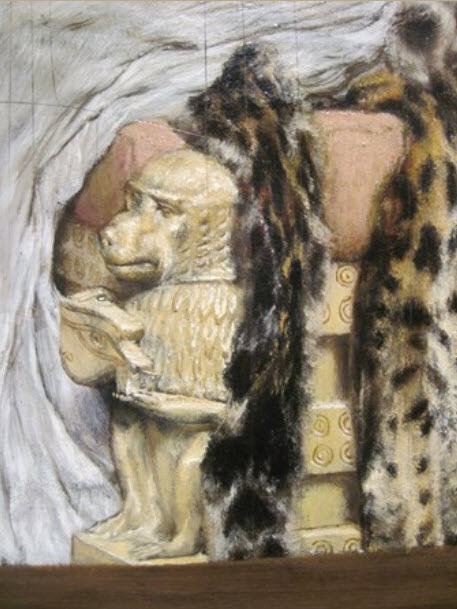
One result of this meeting was that Cleopatra became pregnant with her third child by Antony (the future Ptolemy Philadelphus); another was that parts of Rome’s eastern possessions came under Cleopatra’s control.
Celebrations in Alexandria
In 34 BCE, despite the fact that Antony’s Parthian campaign had been an extravagant failure, Antony and Cleopatra celebrated a mock Roman Triumph in the streets of Alexandria.
Crowds flocked to the Gymnasium to see the couple seated on golden thrones surrounded by their children, and Antony made a proclamation known today as the ‘Donations of Alexandria’. In this declaration Antony distributed lands held by Rome and Parthia amongst Cleopatra and their children, and proclaimed Caesarion as Caesar’s legitimate son.
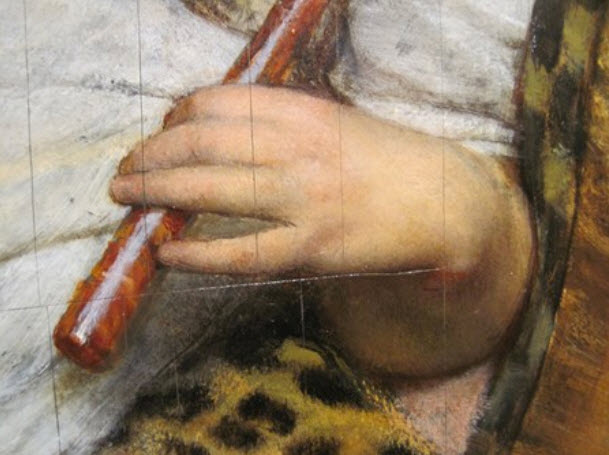
Not surprisingly, the ‘Donations of Alexandria’ caused outrage in Rome, where the rumour began to spread that Antony intended to transfer the empire’s capital from Rome to Alexandria.
In 32 BCE, Octavian had the Senate deprive Antony of his powers and declare war against Cleopatra, calling her a whore and a drunken Oriental.
To avoid another civil war, Antony was not mentioned in the declaration, but this was to no avail and Antony decided to join the war on Cleopatra’s side.
The Battle of Actium & the Invasion of Egypt
The culmination of the war came at the naval Battle of Actium, which took place near the town of Preveza in northwestern Greece, on September 2, 31 BCE.
Here Mark Antony and Cleopatra’s combined force of 230 vessels and 50,000 sailors were defeated by Octavian’s navy commanded by Marcus Vipsanius Agrippa, effectively handing control of the Roman world over to Octavian.
In 30 BCE Octavian invaded Egypt and laid siege to Alexandria. Hopelessly outnumbered, Anthony’s forces surrendered and, in the honourable Roman tradition, Antony committed suicide by falling on his sword.
The Death of Cleopatra
After Antony’s death Cleopatra’s was taken to Octavian who informed her that she would be brought to Rome and paraded in the streets as part of his Triumph. Perhaps unable to bear the thought of this humiliation, on August 12, 30 BCE Cleopatra dressed in her royal robes and lay upon a golden couch with a diadem on her brow.
According to tradition (found in ancient historian Plutarch, for example) she had an asp (an Egyptian cobra), brought to her concealed in a basket of figs, and died from the bite.
Two of her female servants also died with her.
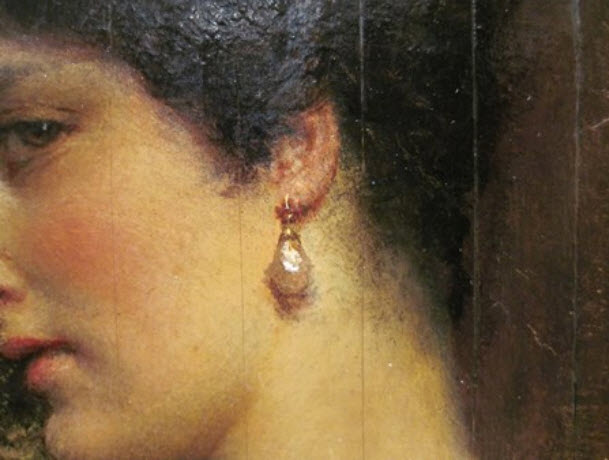
The asp was a symbol of divine royalty to the Egyptians, so by allowing the asp to bite her, Cleopatra became immortal.
Other historians (including Joyce Tyldesley) believe that Cleopatra used either a poisonous ointment or a vial of poison to commit suicide.
Cleopatra had lived thirty nine years, for twenty-two of which she had reigned as queen, and for fourteen she had been Antony’s partner in his empire.
After her death her son Caesarion was declared pharaoh, but he was soon executed on Octavian’s orders. Her other children were sent to Rome to be raised by Antony’s wife, Octavia.
Cleopatra represented the last significant threat to Roman authority and her death also marks the end of the Ptolemaic Kingdom.
The vast treasures of Egypt were plundered by Octavian, and Egypt itself became a new Roman province. Within a few years the Senate named Octavian Augustus and he became the first Roman Emperor, consolidating the western and eastern halves of the Republic into a Roman Empire.
Octavian later published his biography in which he stripped Cleopatra of her political ability and portrayed her as an immoral foreigner, a temptress of upright Roman men.
A number of Roman historians and writers (the poets Horace and Lucan for example) reinforced the image of Cleopatra Empire an incestuous, adulterous whore who used sex to try and emasculate the Roman Empire.
Unfortunately, such Roman propaganda has had a profound influence on the image of Cleopatra that has been passed down into Western culture.
The real Cleopatra was highly skilled politically (though ruthless with her enemies), popular with her subjects, spoke seven languages, and was said to be the only Ptolemy to read and speak Egyptian.
It is also a sobering thought to remember how different the history of western civilization might have been if Cleopatra had managed to create an eastern empire to rival the increasing might of Rome, which she very nearly succeeded in doing.
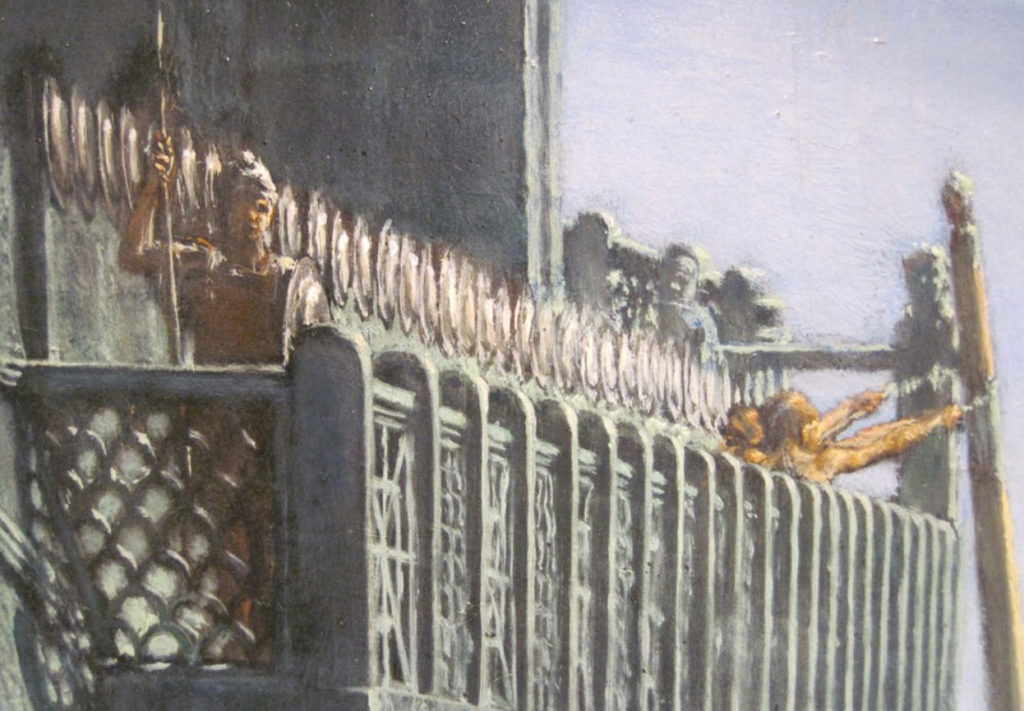
Recent archaeological work has cast some interesting but controversial light on the possible location of Cleopatra’s tomb.
Greco-Roman historian Plutarch wrote that that Antony and Cleopatra were buried together. Then, in 2008 CE archaeologists from the Egyptian Supreme Council of Antiquities and from the Dominican Republic, working at the Temple of Taposiris Magna, 28 miles west of Alexandria, reported that one of the chambers in the building probably contained the bodies of Cleopatra and Mark Antony.
The team have so far discovered 22 bronze coins inscribed with Cleopatra’s name and bearing her image, a bust of Cleopatra, and an alabaster mask believed to represent Mark Antony. Work at the site is ongoing, and only time will tell if the archaeologist are correct in their theory that the great couple were interred at such a distance from Alexandria.
Other works
You can see that the amount of artistic skill, creativity and history that goes into each of these paintings are not something that you can devote a one or two SEO friendly paragraph to. Art, real serious art, is about humans and our humanity. And when we see these spectacular images, we should also be advised o the history behind the images.
Or you can check out “modern art”. It is SEO friendly and doesn’t need explanation for discussion. Like this multi-million dollar piece…
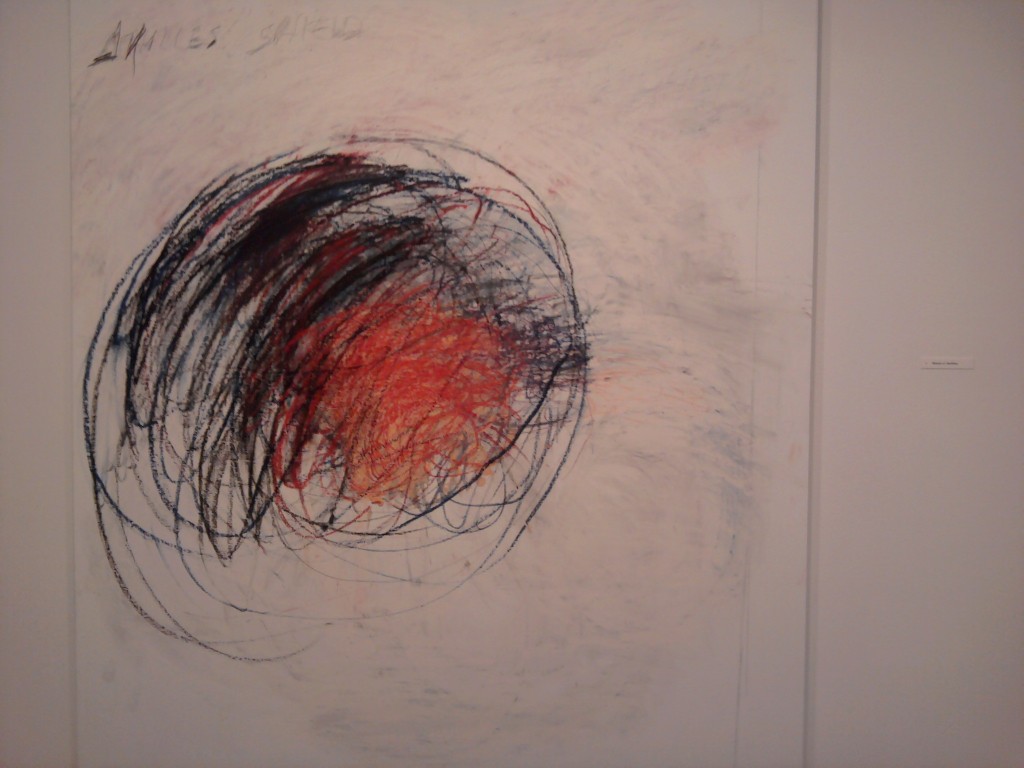
If you want SEO friendly art, you can check out these links…
- 10 ridiculous modern arts you are supposed to take seriously …
- 11 Ridiculous Paintings That Have Been Insanely Sold For …
- What is the stupidest piece of art that’s worth millions …
- 10 Ugly Pieces Of Art You Won’t Believe Sold For Millions
- 10 Of The Most Bizarre Forms Of Modern Art – Listverse
- 14 Ridiculous Pieces Of Art That Sold For Millions Of …
- 10 Worst Modern Arts Ever That Sold For Millions | …
- 10 Weird and Ugly Paintings Worth Millions – the-artists.org
- 9 Unbelievable Pieces of Art that Actually Sold – Oddee
- 18 “Modern Art” Fails That Were So Good, I Just DMed …
- 15 Ridiculous Pieces Of Art That Sold For Millions Of …
- Ridiculous paintings sold for millions – I Lobo You
Ah…
Don’t get too hot and bothered about it. It’s a way that the ultra-rich can avoid government oversight in large money transfers. They assign a value to a “piece of art” and hand the money to the “artist”. He then gives a sizable portion back (a kick back scheme) and volia(!) money suddenly goes “off the books”.
- How The Super Rich Avoid Paying Taxes
- How To Avoid Paying Taxes Legally — and 11 Crazy Ways
- 1031 Exchanges Help Art Investors Avoid Taxes – WSJ
- 10 tax dodges that help the rich get richer | Salon.com
- New IRS Rule Opens Tax Saving Strategy To Art Collectors
- 10 Accounting Tricks the 1% Use to Dodge the Taxman
- How the Rich Hide Their Assets
- Buyers Find Tax Break on Art: Let It Hang Awhile in Oregon
Most nations are unable to tax, track and regulate works of art. So the very wealthy use it as a mechanism to “launder money” legally.
May 19, 2017 · I wake up in cold sweats because of that god damn stupid blue painting being sold for 44 million dollars. It’s garbage. It’s idiotic. It’s nothing better than a starvin Marvin could do with his toes with his last dying breath. But some asshole decided it’s “art” so it’s worth 44 million dollars. Fuck youuuuuuuuuuuu. -Nothing Triggers Me As Much As God Damn Stupid Prices …
So, yeah.
It’s all a fraud.
- Contemporary art is a fraud, says top dealer
- Five Moments That Prove Contemporary Art Is A Hoax –
- Is Contemporary Conceptual Art a Fraud?
- John Robson: Modern art is garbage, and here’s more …
- Is modern and contemporary art basically a scam? – Quora
Enough of the scams…
Here’s some other works by this great artist. Each one can have an entire chapter devoted to it….
The Colosseum
Colosseum, also called Flavian Amphitheatre, giant amphitheatre built in Rome under the Flavian emperors. Construction of the Colosseum was begun sometime between 70 and 72 ce during the reign of Vespasian. It is located just east of the Palatine Hill, on the grounds of what was Nero’s Golden House.
The artificial lake that was the centrepiece of that palace complex was drained, and the Colosseum was sited there, a decision that was as much symbolic as it was practical. Vespasian, whose path to the throne had relatively humble beginnings, chose to replace the tyrannical emperor’s private lake with a public amphitheatre that could host tens of thousands of Romans.
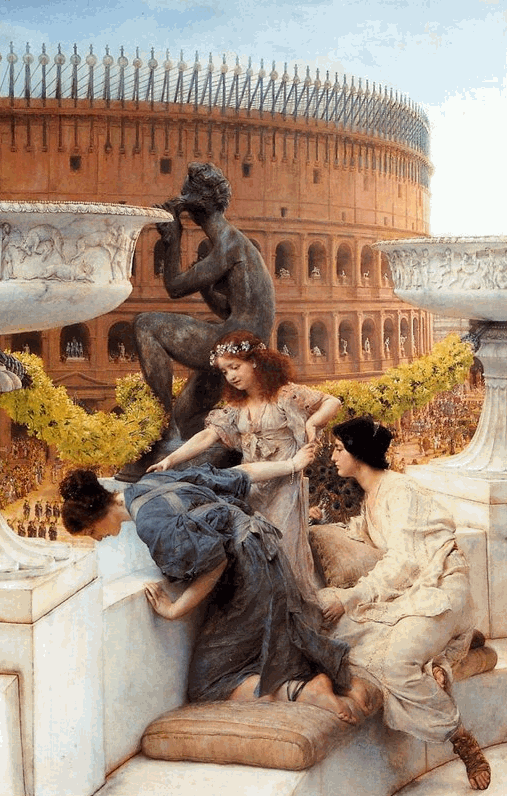
The structure was officially dedicated in 80 ce by Titus in a ceremony that included 100 days of games.
Later, in 82 ce, Domitian completed the work by adding the uppermost story.
Unlike earlier amphitheatres, which were nearly all dug into convenient hillsides for extra support, the Colosseum is a freestanding structure of stone and concrete, using a complex system of barrel vaults and groin vaults and measuring 620 by 513 feet (189 by 156 metres) overall.

Three of the arena’s stories are encircled by arcades framed on the exterior by engaged columns in the Doric, Ionic, and Corinthian orders; the structure’s rising arrangement of columns became the basis of the Renaissance codification known as the assemblage of orders.
The main structural framework and facade are travertine, the secondary walls are volcanic tufa, and the inner bowl and the arcade vaults are concrete.
The amphitheatre seated some 50,000 spectators, who were shielded from the sun by a massive retractable velarium (awning).
Supporting masts extended from corbels built into the Colosseum’s top, or attic, story, and hundreds of Roman sailors were required to manipulate the rigging that extended and retracted the velarium.
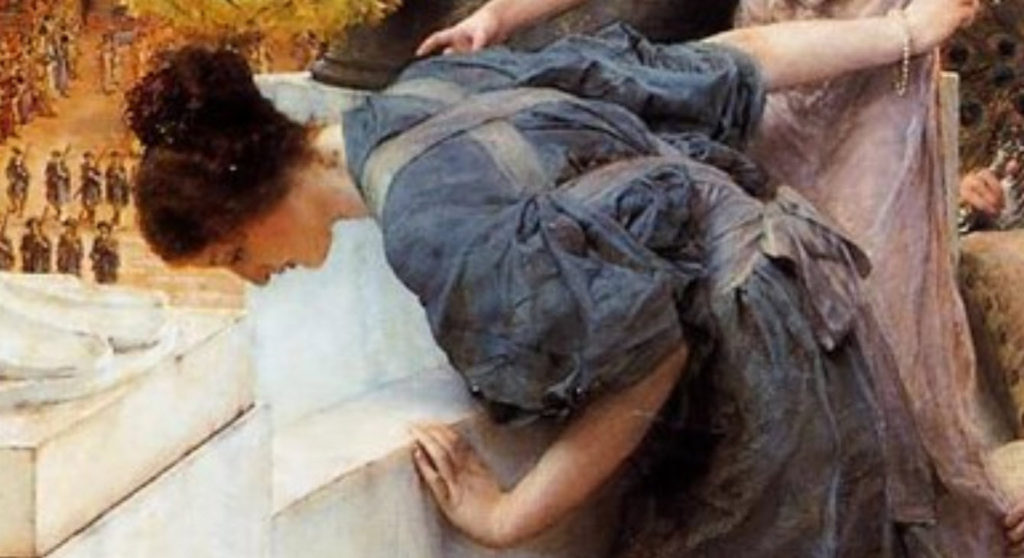
The Colosseum was the scene of thousands of hand-to-hand combats between gladiators, of contests between men and animals, and of many larger combats, including mock naval engagements. However, it is uncertain whether the arena was the site of the martyrdom of early Christians.
A Dedication to Bacchus
Bacchus was a Roman agricultural god who was associated with the harvest — particularly that of grapevines. The son of Jupiter by a human woman, Bacchus was said to wander the world educating people about the delightful wines that could be made from grapes.
The word bacchanalia comes from Bacchus, and the wild parties thrown in his honor. According to legend, Bacchus traveled the earth teaching people how to make wine, and is credited with spreading grapevine cuttings around the world. Secret rituals for women only were held in Bacchus' honor during the ancient Roman period.
Much like his Greek counterpart Dionysus, Bacchus earned the title of party god. In fact, a drunken orgy is still called a bacchanalia, and for good reason. Devotees of Bacchus whipped themselves into a frenzy of intoxication, and in the spring Roman women attended secret ceremonies in his name.
Bacchus was associated with fertility, wine and grapes, as well as sexual free-for-alls. Although Bacchus is often linked with Beltane and the greening of spring, because of his connection to wine and grapes he is also a deity of the harvest. A celebration is held in his honor each year at the beginning of October.
Bacchus is often portrayed crowed with vines or ivy. His chariot is drawn by lions, and he is followed by a group of nubile, frenzied priestesses known as Bacchae. Sacrifices to Bacchus included the goat and the swine, because both of these animals are destructive to the annual grape harvest — without grapes, there can be no wine.
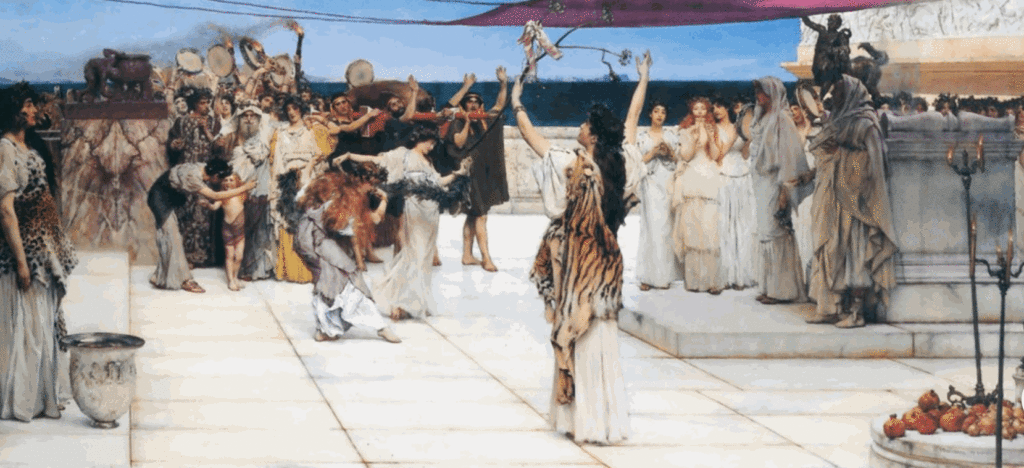
Bacchus has a divine mission, and that is his role of liberator. During his drunken frenzies, Bacchus loosens the tongues of those who partake of wine and other beverages, and allows people the freedom to say and do what they wish.
In mid-March, secret rituals were held on Rome’s Aventine hill to worship him. These rites were attended by women only, and were part of a mystery religion built up around Bacchus.
In addition to being the patron of wine and drink, Bacchus is a god of the theatrical arts. In his earlier incarnation as the Greek Dionysus, he had a theater named for him in Athens. He is often portrayed as a slightly effeminate figure, prone to good humor and general bawdiness.
The Women of Amphissa
This painting was inspired by an historical event recorded by Plutarch, a Greek historian, biographer and essayist. This painting shows the morning after a celebration of Bacchus/Dionysus, the God of wine and ritual madness.
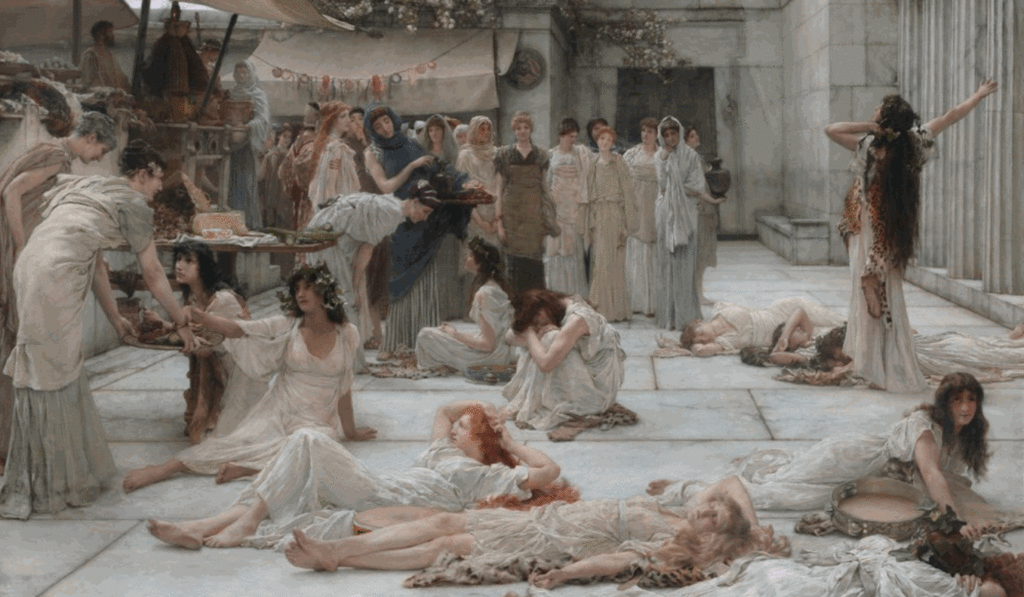
This celebration caused a group of women to wander into the city of Amphissa from Phocis.
Despite these two cities being at war, the women of Amphissa allowed the women from Phocis to fall asleep in their marketplace and stood guard throughout the night to ensure the men of the city caused them no harm.
As seen in this painting, the women of Amphissa also provided them with food and care the next morning.

While The Women of Amphissa is both ethereal and dream-like, it is also very realistic as the details created by Alma-Tadema make the painting come to life. From the hair and clothing of the women, to the flowers and sculptures in the wall, the details create the beauty of this painting.
Alma-Tadema also uses a lot of white and varying shades likely representative of the peace between these groups. It is reported that Alma-Tadema used his second wife, Laura, as a model for this painting.
Many interpret this painting as a lesson in charity and humanity for the Victorian people of Alma-Tadema’s time as this was an era with lots of poverty, child labour and morality standards. It has also come to represent the strength of femininity and the importance of protection because the women of the city would have stood up to soldiers if necessary.
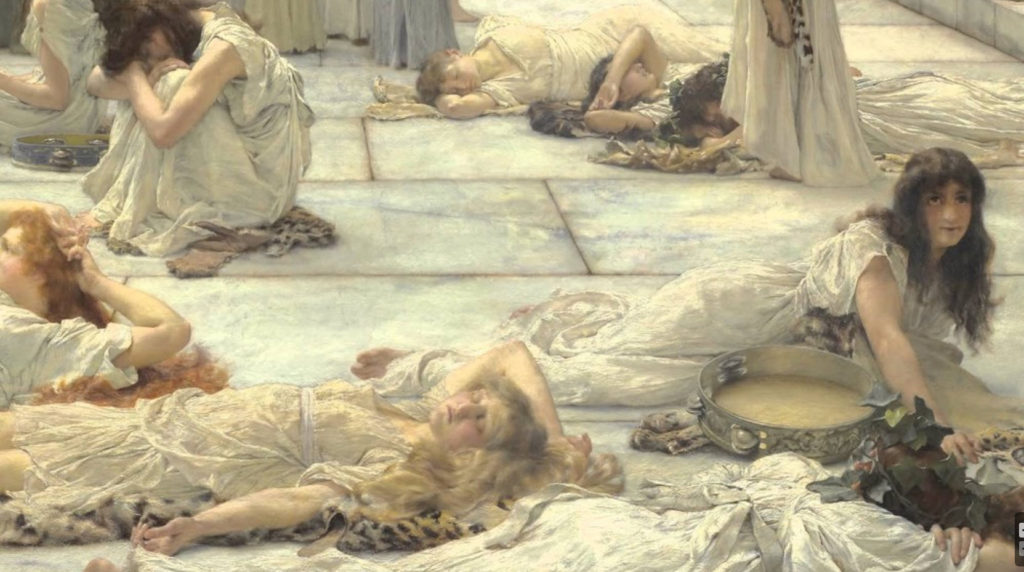
After his death in 1912, Alma-Tadema’s work was held in low esteem by the public despite his success during his life.
In the 1960s, however, his body of work was re-examined and deemed very significant for art history and in particular English art of the nineteenth century. Today, The Women of Amphissa is part of the private collection of the Sterling and Francine Clark Art Institute.
The Finding of Moses
Moses, Hebrew Moshe, (flourished 14th–13th century bce), Hebrew prophet, teacher, and leader who, in the 13th century bce (before the Common Era, or bc), delivered his people from Egyptian slavery. In the Covenant ceremony at Mt. Sinai, where the Ten Commandments were promulgated, he founded the religious community known as Israel. As the interpreter of these Covenant stipulations, he was the organizer of the community’s religious and civil traditions. In the Judaic tradition, he is revered as the greatest prophet and teacher, and Judaism has sometimes loosely been called Mosaism, or the Mosaic faith, in Western Christendom. His influence continues to be felt in the religious life, moral concerns, and social ethics of Western civilization, and therein lies his undying significance. -Moses | Story, Summary, Significance, & Facts | Britannica
According to the biblical account, Moses’ parents were from the tribe of Levi, one of the groups in Egypt called Hebrews. Originally the term Hebrew had nothing to do with race or ethnic origin. It derived from Habiru, a variant spelling of Ḫapiru (Apiru), a designation of a class of people who made their living by hiring themselves out for various services.
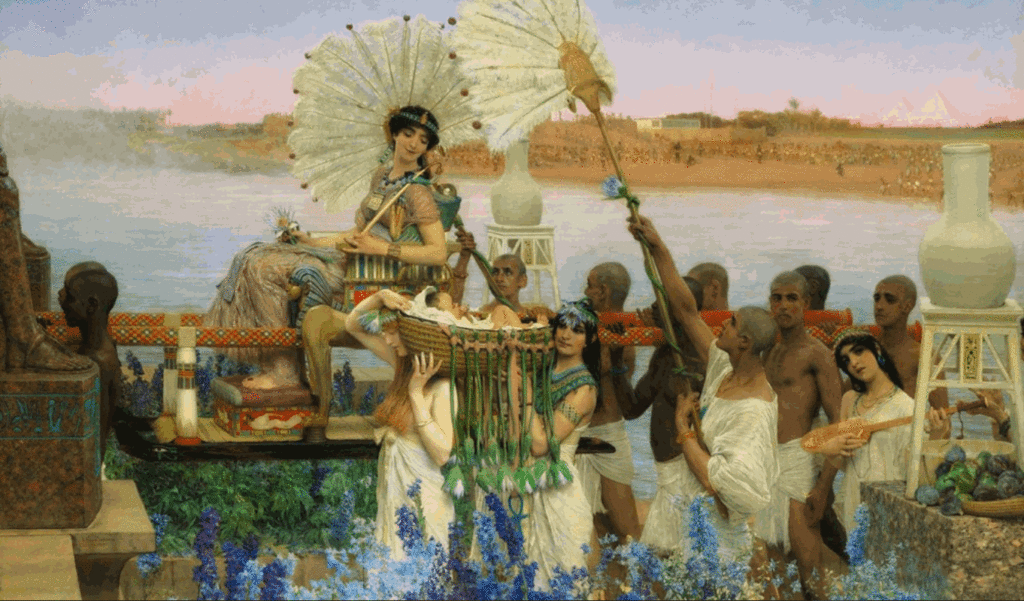
The biblical Hebrews had been in Egypt for generations, but apparently they became a threat, so one of the pharaohs enslaved them.
Unfortunately, the personal name of the king is not given, and scholars have disagreed as to his identity and, hence, as to the date of the events of the narrative of Moses.
One of the measures taken by the Egyptians to restrict the growth of the Hebrews was to order the death of all newborn Hebrew males. According to tradition, Moses’ parents, Amram and Jochebed (whose other children were Aaron and Miriam), hid him for three months and then set him afloat on the Nile in a reed basket daubed with pitch.
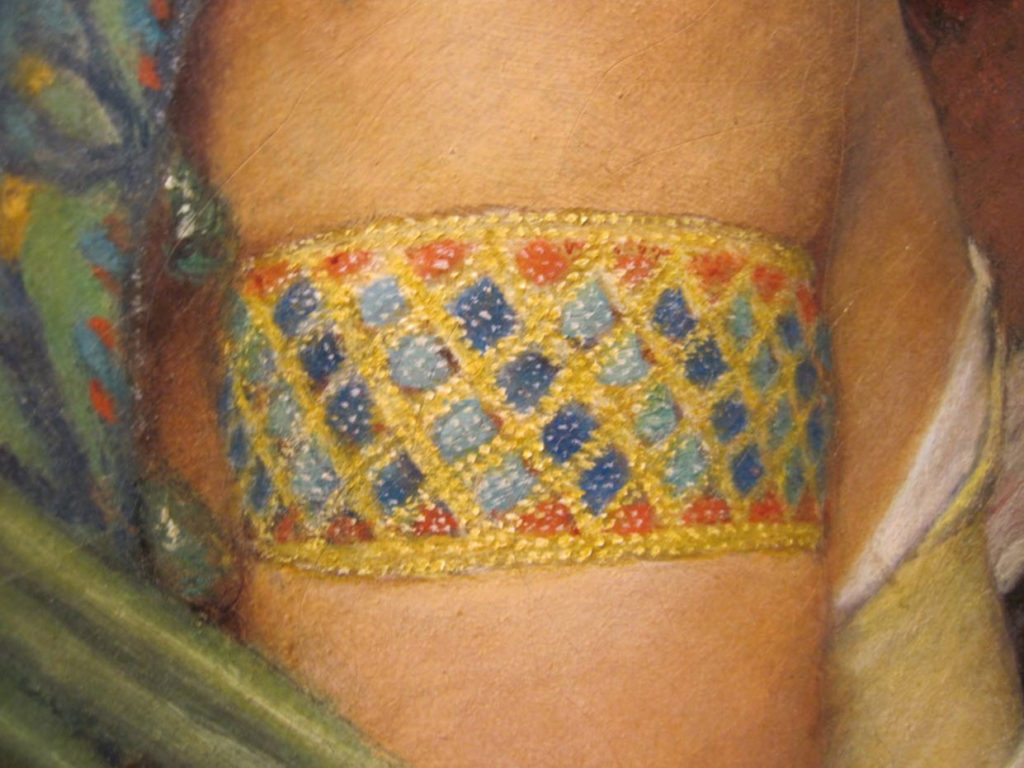
The child, found by the pharaoh’s daughter while bathing, was reared in the Egyptian court.
While many doubt the authenticity of this tradition, the name Moses (Hebrew Moshe) is derived from Egyptian mose (“is born”) and is found in such names as Thutmose ([The God] Thoth Is Born).
Originally, it is inferred, Moses’ name was longer, but the deity’s name was dropped. This could have happened when Moses returned to his people or possibly even earlier, because the shortened form Mose was very popular at that time.
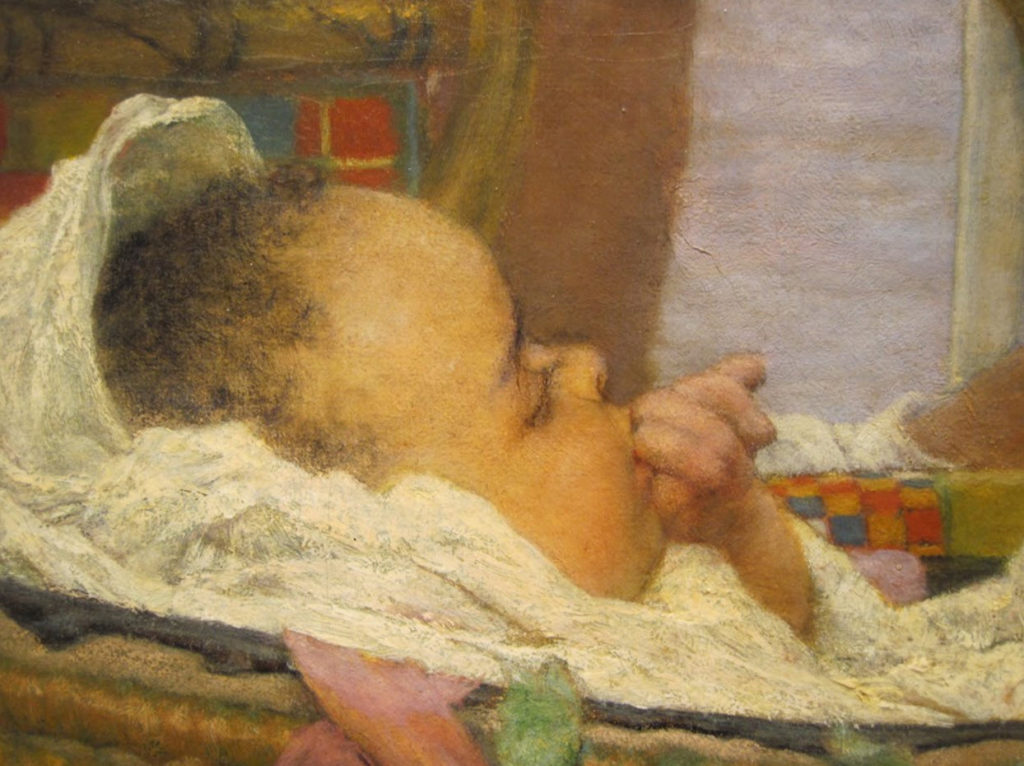
Moses’ years in the court are passed over in silence, but it is evident from his accomplishments later that he had instruction in religious, civil, and military matters.
Since Egypt controlled Canaan (Palestine) and part of Syria and had contacts with other nations of the Fertile Crescent, Moses undoubtedly had general knowledge of life in the ancient Near East. During his education he learned somehow that he was a Hebrew, and his sense of concern and curiosity impelled him to visit his people.
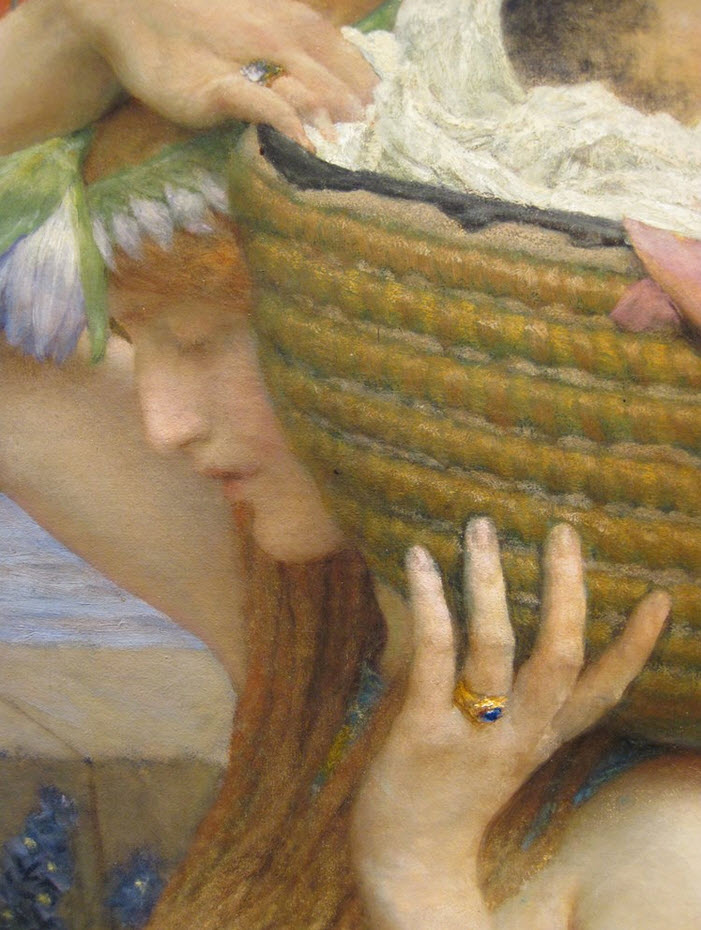
According to the biblical narrative, Moses lived 120 years and was 80 when he confronted Pharaoh, but there is no indication how old he was when he went to see the Hebrews. Later Jewish and Christian tradition assumed 40-year periods for his stay in the Egyptian court, his sojourn in Midian, and his wilderness wanderings.
Most likely Moses was about 25 when he took the inspection tour among his people. There he saw the oppressive measures under which they laboured. When he found an Egyptian taskmaster beating a Hebrew, probably to death, he could control his sense of justice no longer. After checking to make sure that no one was in sight, he killed the tough Egyptian overlord.
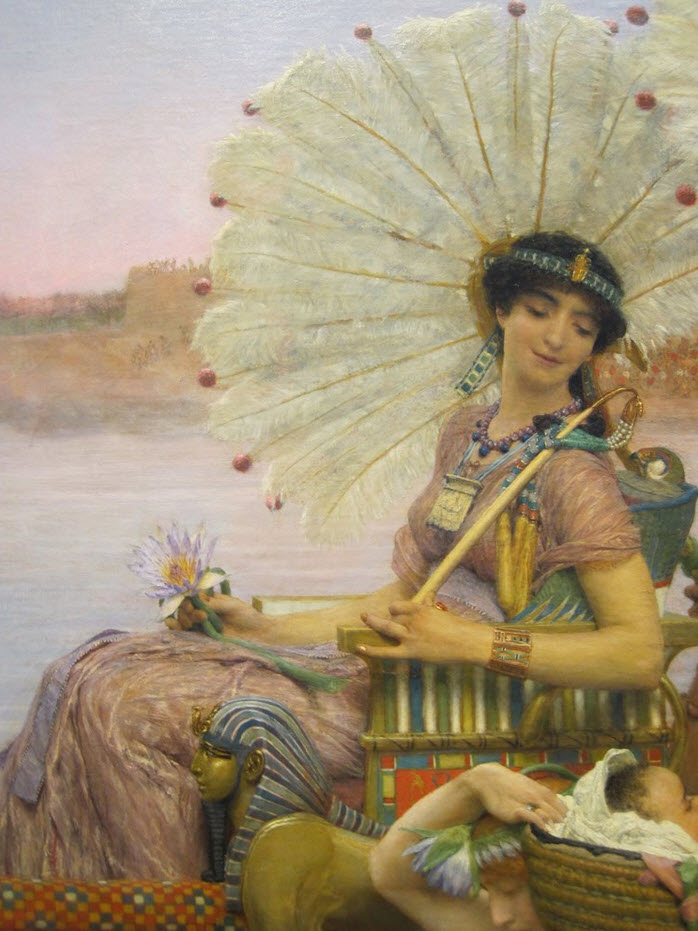
As a prince in the court, Moses was probably in excellent physical condition, and apparently he knew the latest methods of combat.
The flush of victory pulled Moses back the next day. …
Phidias Showing the Frieze of the Parthenon to his Friends
The Parthenon frieze, which runs on a continuous line around the exterior wall of the cella, is 1 meter high and 160 meters long. The sculptures are executed in low relief and depict the people of Athens in two processions that begin at the southwest corner and parade in opposite directions until they converge over the door of the cella at the east end of the Parthenon. Almost certainly it represents the Panathenaic procession that was a central celebration in Athens during Classical times. -The Parthenon Frieze - Ancient Greece
The full title of this startling painting is Phidias Showing the Frieze of the Parthenon to His Friends, and it was painted by Lawrence Alma-Tadema in 1868. You can’t get much more Classical than this for inspiration.
In the painting, which takes place sometime in the 5th century BCE, the famous ancient Greek sculptor Phidias (ca. 480-430 BCE), the man in the dark robes at center, shows off the magnificent creation he’s made for Athens’s famous temple, the Parthenon.
The friends, obviously well-to-do citizens of Athens, admire his handiwork.
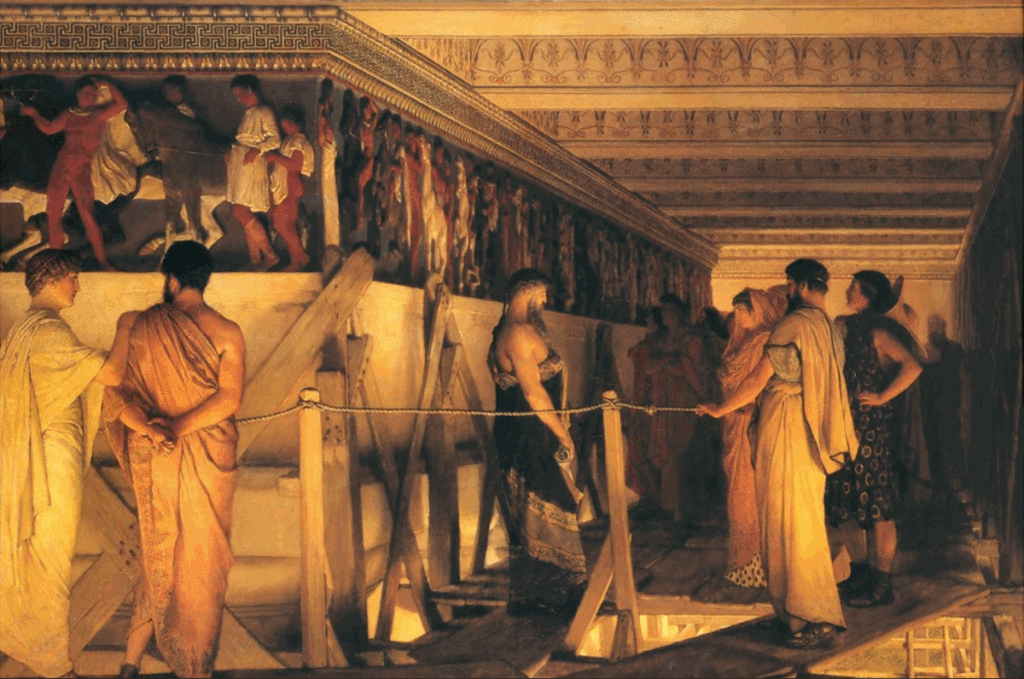
The frieze of the Parthenon is a long series of sculpted bas-reliefs, chiseled from marble, that adorned the top of the Parthenon beneath the eaves. The frieze, evidently depicting a ceremonial procession of the Athenians, was/is one of the great works of art of classical Greece.
Historians are unsure whether it was carved in place, or carved previously and somehow hoisted up toward the roof. The majority of the frieze was removed from the Parthenon about 1800 and now resides in the British Museum in London, where Alma-Tadema saw it. (I saw it there too in the year 2000).
Phidias was an Athenian sculptor, the son of Charmides, and is generally acknowledged as the greatest ancient Greek sculptor and instigator of the classical style of the 5th and 4th centuries BC. Although few facts are known about his life, it is believed he lived from around 490 until 430 BC. No originals of his work exist, but his recognition as a renowned sculptor has been guaranteed due to the praise of ancient writers, as well as the influence his sculptures had on the development of the art. He gained most of his fame for his two enormous chryselephantine (gold and ivory) sculptures: One of Athena in the Parthenon, and the other of Zeus at Olympia. These statues had such a profound impact that they determined all subsequent conceptions of Athena and Zeus. -Ancient Greece
This wonderful painting combines the best of 19th century Classical-themed art with a sort of romantic-tinged realism. The figures do appear realistic, though stylized in a way most of us would conceive of ancient Greece, looking back on it from several thousand years.
Note, however, the hairstyles on Phidias and the man on the far left, and Phidias’s beard curls. The tight kinky hair, a bit too perfect to look natural, is the way hair was often portrayed in ancient Greek art. The colors here are warm and rich, almost evocative of 19th century gaslight. I absolutely love paintings like this, for they bring to life the classical world in a very vivid and eye-catching way.
The sculpted marble depicts the Olympian gods seated while the citizens on Athens carved in low relief move stoically in the procession towards the central point around a scene depicting the folding of the peplos. The peplos was a central item in the Panathenaea and was woven by the virgins dedicated to the goddess Athena exclusively for use during the procession. A large number of cavalry dominates the west end of the frieze, while a host of elders, musicians and people escorting sacrificial animals, fill the spaces towards the east end. The frieze over the door places the “peplos scene” at the center, while gods, and heroes, and women flank it on both sides. The gods are seated, making them twice as large as the rest of the figures who are standing or riding, and they appear in the typical realistic mortal form we are accustomed to seeing in Classical art. The inclusion of a continuous Ionic freeze is not exclusive to the Doric Parthenon. What is unique however is the depiction of mere mortals as the subject in the decoration of a temple in Ancient Greece. If we accept that the frieze depicts the Panathenaic procession we are confronted with the fact that the line between the divine and the human has been deliberately blurred not only through the formal aesthetic conventions as with other sculptures, but via an intentional thematic narrative that places the gods among the mortals or the humans among the divine. Perhaps in the Parthenon frieze we finally glimpse the definitive formulation of Greek thought into concrete iconography: the natural world and the human being as a divine entity worthy of exploration and immortality through the arts. In ancient times all the sculptures as well as the buildings were vividly painted and were complemented with metal attachments in the form of spears, swords, horse reins and other appropriate accessories. The result must have been a dazzling, (if not gaudy) array of three dimensional paintings, with a much different visual interpretation than the one we derive today trough the “sterilized” museum exhibits of white stone at eye level. -The Parthenon Frieze - Ancient Greece
The painter, Lawrence Alma-Tadema, was obviously a brilliant artist, and he seems to have been an interesting person. He was born in Holland but moved to Britain in 1870 when the Franco-Prussian War broke out. A gregarious extrovert, he is said to have loved parties, wine and women. There’s a touch of melancholy about him; widowed twice, Alma-Tadema was thrown into deep depressions after the deaths of his two wives, Pauline in 1869 and Laura in 1909. Alma-Tadema died in Germany in 1912, and is buried in St. Paul’s Cathedral.
Art like this makes life worth living. Kudos to Lawrence Alma-Tadema. As I say often, I could run Metallicman for decades on nothing but Historic Paintings posts!
Spring
Spring is an 1894 oil painting by Lawrence Alma-Tadema, currently in the collection of the J. Paul Getty Museum in Los Angeles, California . Spring depicts the festival of Cerealia in a Roman street. One of Tadema's most famous and popular works, it took him four years to complete. -Spring (painting) - Wikipedia
This is an enormous work. The painting is like two stories high and so filled with detail that it boggles the mind. To really appreciate it, you need to look at the various sections of it in detail.
Here is a small section…
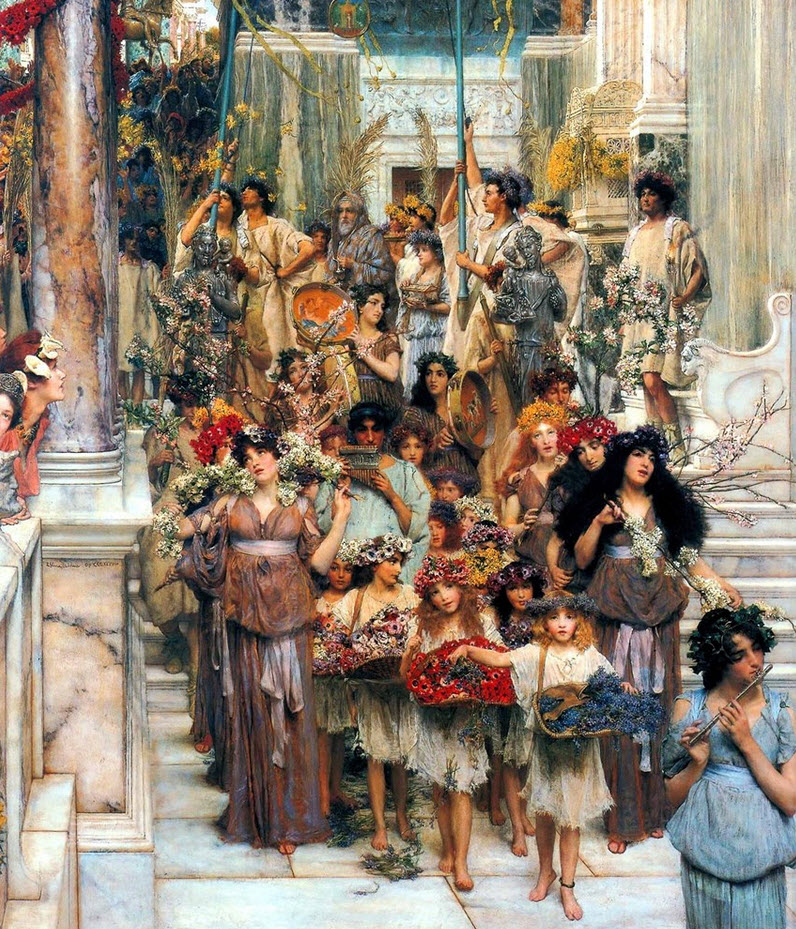
Alma Tadema finished painting “Spring” in 1894. The subject is the celebration parade marking the return of spring.
He had worked on it for four years, making at least one major alteration. It is a tall narrow painting, 178.4 × 80.3 cm, painted in oil on canvas, and also its original, hefty, classic-style frame was designed by the artist. The painting was first put on display at the Royal Academy in 1895 and enjoyed great success. The picture’s popularity continued over the next few years with prints very much in demand.
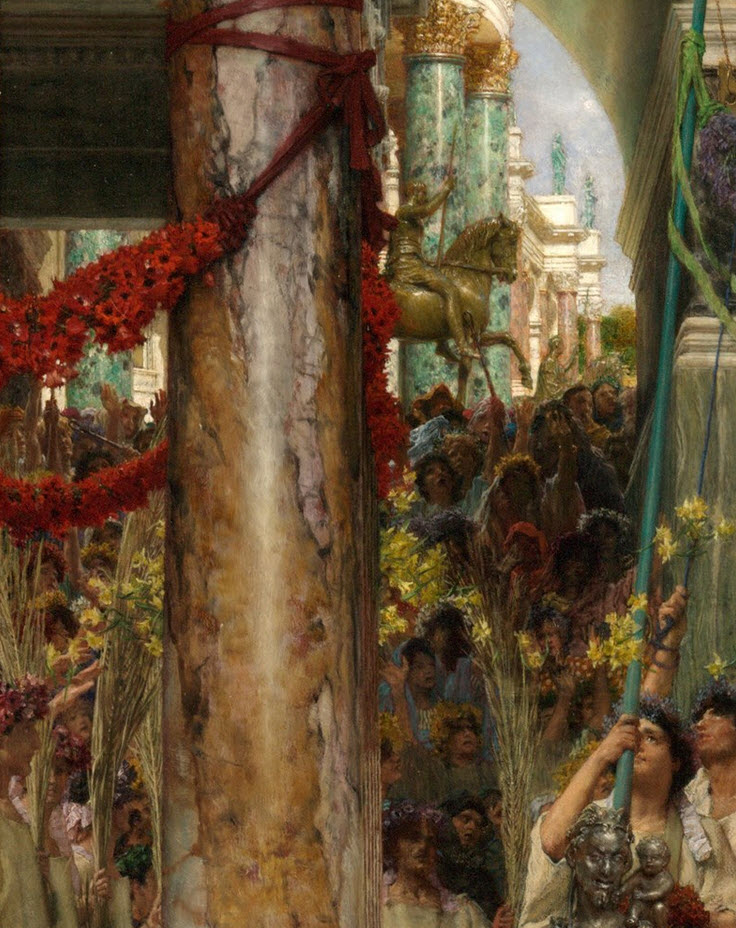
After a memorial exhibition in 1913, the painting disappeared from the art scene, and it was not until 1970 that it made a comeback. It joined the collection of a certain Mr. Funt, an American TV personality/art collector, and it was subsequently purchased at auction by the Getty Museum in 1972. It was thought at the time to represent the realities of ancient Rome and it took pride of place in the Getty “Roman Villa” in 1974. The apparent authentic “Romanism” of the painting had even inspired certain scenes in Cecil B. De Mille’s Hollywood production of “Cleopatra” of 1934. However, further research into the painting’s subject and significance suggests it is more an idealised Victorian representation of spring, rather than a specific Roman festival.

The scene, with a procession of young people, flowers and musical instruments, is a joyful springtime celebration. It has been likened to the Roman spring festivals: Floralia, Cerealia or Ambarvalia.
The artist may have been inspired by descriptions of the spring festival in honour of Ceres or Flora as described by the Roman poet Ovid.
It also corresponds to Victorian Mayday festivities, where young girls went out into the countryside and collected flowers, then carried them back in blithesome procession.
Alma Tadema presents the scene as a parade in a festive jubilant setting, and it was something the people could relate to. Processions abounded in late Victorian England: receptions for visiting heads of state, royal weddings of Queen Victoria’s children/grandchildren, and particularly for the queen’s fifty, and then sixty, years of reign.
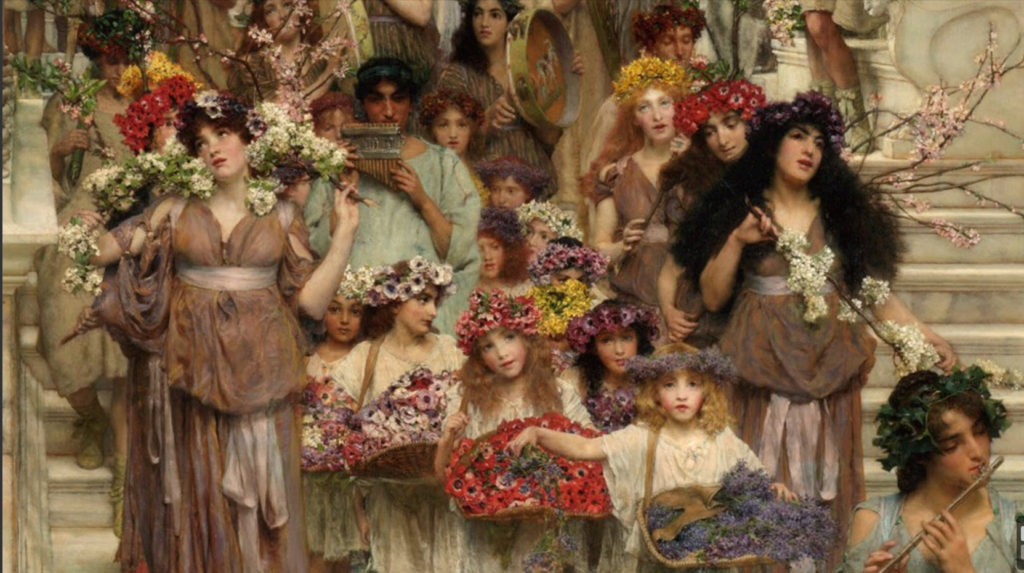
Here, the backdrop is ancient Rome and the procession winds through shining marble passageways.
Young girls carry pretty flowers or branches with buds or blossoms. Pipers are making music. Others follow carrying symbolic ritual items, including the bearers of a fine chalice, a casket and an ivory altar.
Excited onlookers line the way. These beautifully detailed groups of figures and the surrounding Roman architecture are the key to the painting. Lawrence Alma Tadema was known for his glorious details; it is said that Alma Tadema compositions are the sum of his details.

Looking closely, we behold richly ornamented columns and partial columns, full statues that replicate authentic Roman statues in silver and bronze, finely detailed nature elements, and above all, a dazzling feast of delicate yet vibrant spring flowers.
The faithfully wrought architecture of this Tadema Rome has numerous columns, arches and balconies to seem almost like a stage set. Indeed, the artist had a background in creating grandiose stage sets for Shakespeare plays in the 1880s that amply satisfied the Victorian taste for spectacle.
Against this stage-like background of white marble, and the pale, pastel clothing of the people, the strong bright colors of the flowers and garlands really stand out. The eye goes from one spot of color to another, then, in the distance, to the red walls of the “royal box”, where the viewer pauses to absorb a myriad of refined details.
The impact of the picture is the contrast between vibrant colorful flowers and the stark white marble. It is the flowers that provide the most important detail, a detail that reflects the artist’s well-known fondness for flowers. However, the flowers in the picture are not all Mayday blossoms; many were selected for their colors and symbolism rather than appropriateness of season.
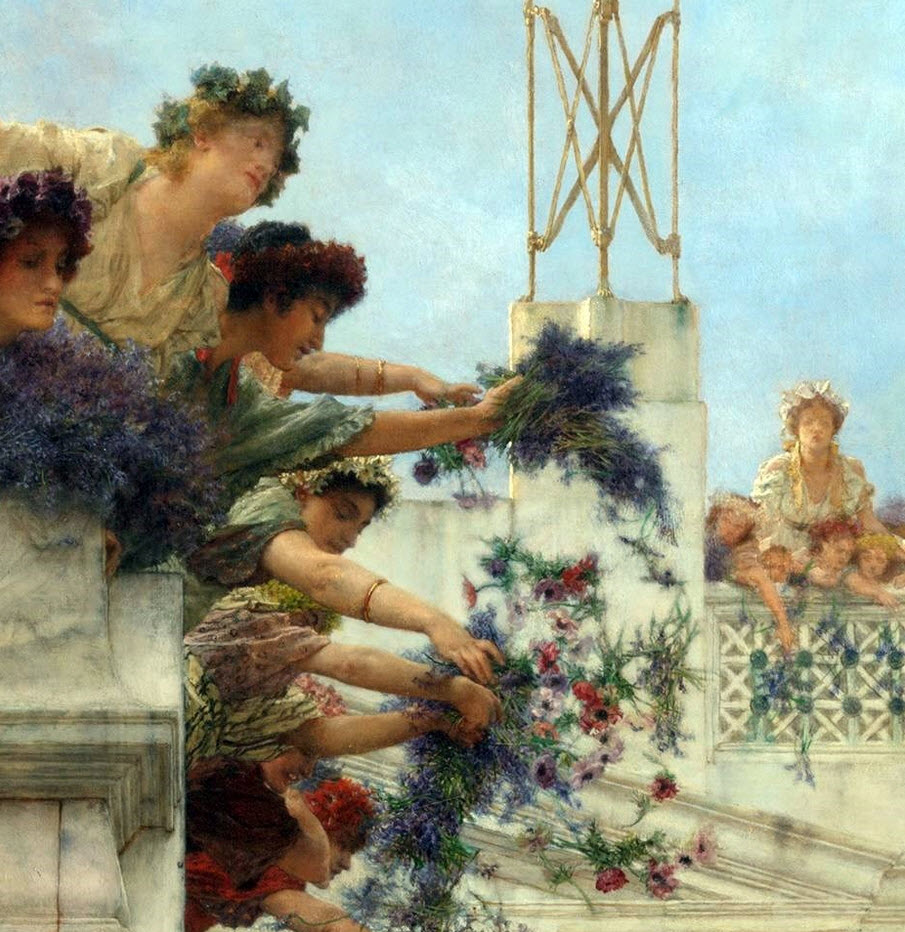
One last detail gives us an insight into the Roman period that Alma Tadema wanted to represent in his celebration of spring: the inscription and relief on the archway at centre left of the picture.
The artist has reproduced the dedication sculpted on the Arch of Trajan in Benevento, near Rome, built to commemorate the opening of the Appian Way and completed during the reign of the Emperor Hadrian (reigned 117-138).
This leads us to presume that the setting for Lawrence Alma Tadema’s joyous “Spring” is Emperor Hadrian’s prosperous Rome.
Who says that art is a purely visual enjoyment?
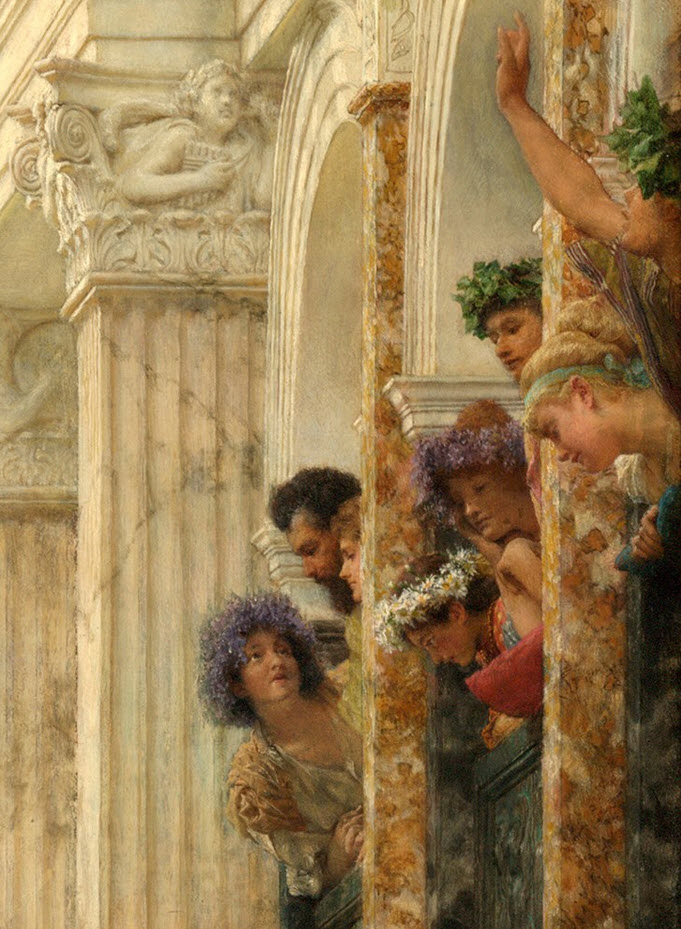
This gracious painting of “Spring” is full of fragrant air, you can almost smell the faint perfume of the darling buds of May, you can hear the light lilting music, you can feel the warming rays of the sun.
“As the sun colors flowers, so art colors life”.
This was the artist’s personal motto, and the idea is present in every Lawrence Alma Tadema composition. Originally from Holland, the young Lawrence, or Lourens as he was originally named, studied art at the Royal Academy of Antwerp. In 1870, he moved to England where he settled permanently in London. He adjusted his name to the more Britannic “Lawrence”, and his Dutch origins are often overlooked.
He had a passion for nature and for ancient, particularly Roman, history; both of these interests are evident in many of his paintings.
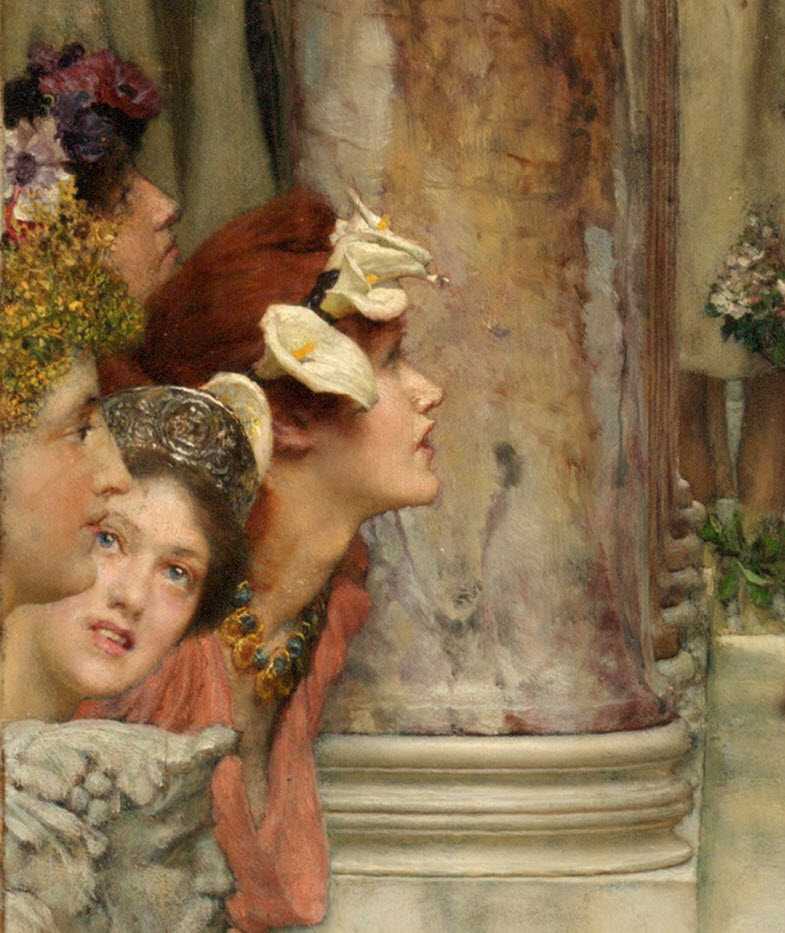
“Spring” is the quintessence of the Lawrence Alma Tadema artistic style. He paid great attention to natural and historic details in his paintings, striving for authenticity.
He was an avid historical researcher and always strove to get historic details exactly right.
Where the setting is of Roman inspiration, as here, he made sure that architecture, dress and musical instruments were accurate.
He had a personal archive of photographs depicting Roman antiquities that enabled him to get true-to-life historical accuracy in his paintings. He possessed a tremendous curiosity about all things ancient and acquired a precious expertise which he poured into his art.
He created over 300 paintings in this vein, bringing antiquity vividly to life on the canvas.
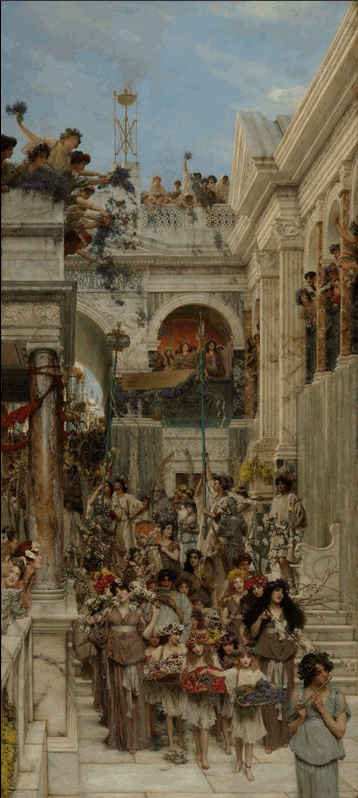
The Vintage Festival
The ancient Romans loved celebrations. They especially enjoyed a holiday they celebrated around the 25th of December.
Remind you of any date, eh?
The Romans feasted, gave gifts, were merry, and decorated their homes with greenery. Roman Festivals were also held in ancient Rome in response to particular events, or for a particular purpose such as to assuage or to honor the gods.
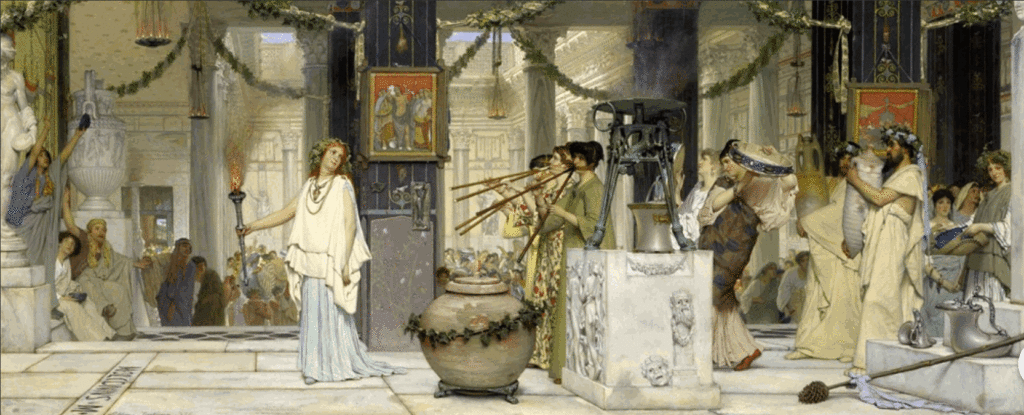
Check out Ten Roman Festivals that were pretty cool…
Anna Parenna Festival
The Roman Festivals for Anna Parenna, “goddess of the returning year” was held each year on the first day of the ancient year. Traditionally, Romans would cross the Tiber and “go abroad” into Etruria and have picnics in flimsy tents or huts made of branches. Both men and women would drink as much alcohol as they could, for it was thought that one would live for as many years as cups of alcohol one could drink on this day.
Saturnalia
This one’s a classic, and it gives us the origins of Christmas. Held in late December, it involves general feasting and present-giving. Most notably, though, it was the night when masters and slaves exchanged places. Can you imagine how awkward that would be? Sure it sounds like it’s a bit of fun, letting the slaves have a night off, but they were back as slaves the next day, so I can’t think they would let themselves have too much fun… The most important thing about this festival, though, is that the blokes do the cooking.
Lupercalia
Opinions are divided on whether this February festival is a ritual of purification or fertility. What they do know is that it involved barely-clad young men running through the streets, striking people with a goat thong. No, I do not know what a goat thong was. Moving on…
Veneralia
On April 1, this was another festival involving topsy-turviness (technical term there). It was the one day in which women (aristocrats and plebs mingling together) were allowed to enter the men’s baths, wearing myrtle wreaths in honour of Venus Verticordia. They would take a statue of Fortuna Virilis (fortune of men) in with them, removing her jewellery (yep, statues wore jewellery) to wash her.
Parilia
A rural festival, this one involves shepherds jumping over bonfires. And, um, sheep. The sheep jump over the bonfires. I can’t even imagine how that works.
Fornacalia
I’m not even kidding. Don’t get too excited, though, this one’s just about the baking of the corn. Honest. Corn-baking. Festival of ovens.
Parentalia
This one has shades of Halloween in that it’s a festival of the dead. Held in February in honour of the deified ancestors, this is a week of sacrifices (flower garlands, wheat, salt, wine-soaked bread, violets) to the manes or shades of the dead. At the end of the week, on the Feralia, the paterfamilias (senior male of the family) exorcises the ghosts, and the following day on the Caristia, everyone has a nice lunch and says nice things about the ancestors who are now (we hope) thoroughly gone again until next year.
Lemuria
No, this isn’t the holy Roman festival celebrating lemurs (though, wouldn’t that be awesome??), it’s another day of making sure the dead lie down. Possibly instituted in honour of the death of Remus (killed by his ambitious twin brother Romulus), this May festival is about appeasing the restless dead with the creative application of beans. Also, the Vestals baked cake. Salt cake, not layer cake, which is a shame because you’d think after a hard day of spirit-appeasing, everyone could do with a bit of cake.
Floralia
Another nearly week-long festival, this one in April-May and revolving around flowers, flowers and more flowers. Also colourful clothes, milk and honey. It was dedicated to the springy goddess Flora, and was particularly popular with prostitutes, who claimed the festival as their own. This is the origins of the May Day celebration, of course, with its ribbons and morris dancers. The Romans also held the Ludi Florales or Games of the Flowers, which actually involved lots of theatre and performing arts as well as good old circus acts. Apparently at the end of the performing animal acts in the Circus Maximus, all the animals were set free, which sounds like a very bad idea indeed.
The October Horse
The famous racing festival of Rome (Melbourne Cup and Ascot, eat your heart out), this one took part on the Ides (full moon) of October, and involved a two-horse chariot race. This one is famous because the right-hand (outer) horse of the winning pair would be slaughtered, beheaded, chopped into little bits and burned as sacrifice. And the Vestals would keep some of the blood, for cake-making purposes. Oh yes they would. And everyone thinks they’re so sweet…
The Bona Dea.
This one’s my favorite. The first rule of Bona Dea is, you don’t talk about Bona Dea. The second rule of Bona Dea is, YOU DON’T TALK ABOUT BONA DEA. This was a women’s festival, no men allowed, and the rites were famously secret. This did not prevent male writers and artists from getting lasciviously excited about what actually happened at these ceremonies. There were rumors of snakes. Of drinking wine and calling it ‘milk.’ Did I mention the snakes? The important thing, though, is that no women have recorded what went on, because speaking of it was forbidden, leaving us with just the speculations of men. I’m suspecting that Lindsey Davis had it right with mint tea and finger sandwiches, sadly.
What we do know is that in 62 BCE it was being hosted by the wife and mother of Julius Caesar, and a tribune called Publius Clodius sneaked in, disguised as a flute girl, in the hope of seducing Caesar’s wife. Honestly, you can’t make this stuff up. He was put on trial for blasphemy, but the women all refused to testify against him, saying in essence: the goddess will get him. And indeed she did…
Well, okay, he died in a riot, but it was near the temple.
Fine, it was within sight of the temple.
The moral of the story is that you don’t mess with the gods, okay? Just keep killing the animals and baking the cakes and everything’s Going to be Fine.
Unconscious Rivals
I like this particular painting because of the great arching ceiling and the expressions on the faces of the two women. It’s a masterpiece for certain. Just look at the details on the flower bush.
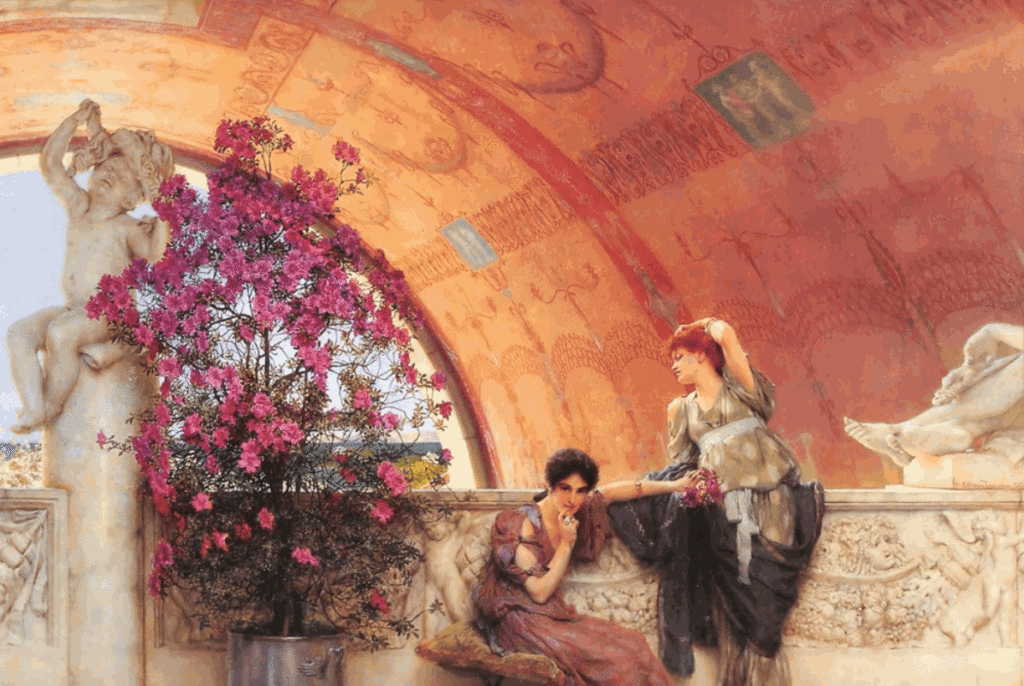
After the Audience
Here’s another favorite. I enjoy the deference of the people to the emperor. The photo below does not give it justice. You have to see it close up and look at the details to fully appreciate it.
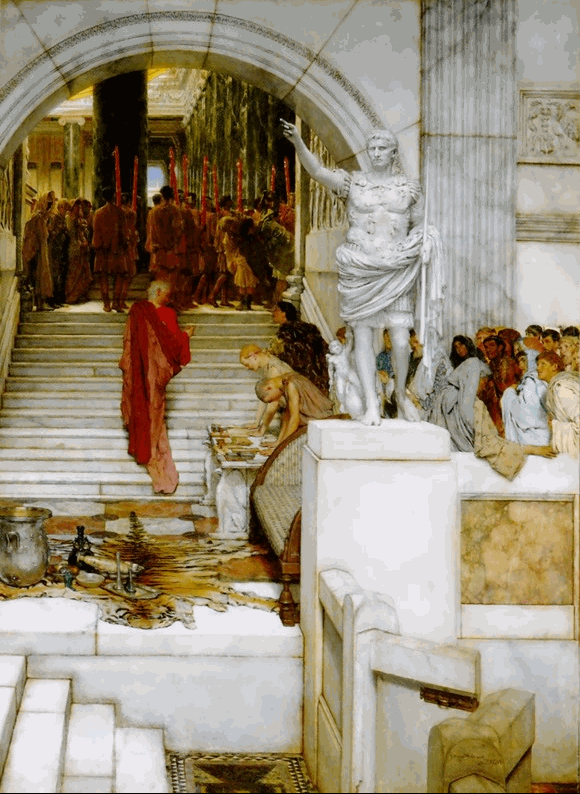
A Favorite Custom
Baths for bathing and relaxing were a common feature of Roman cities throughout the empire. The often huge bath complexes included a wide diversity of rooms offering different temperatures and facilities such as swimming pools and places to read, relax, and socialise.
Roman baths, with their need for large open spaces, were also important drivers in the evolution of architecture offering the first dome structures in Classical architecture.
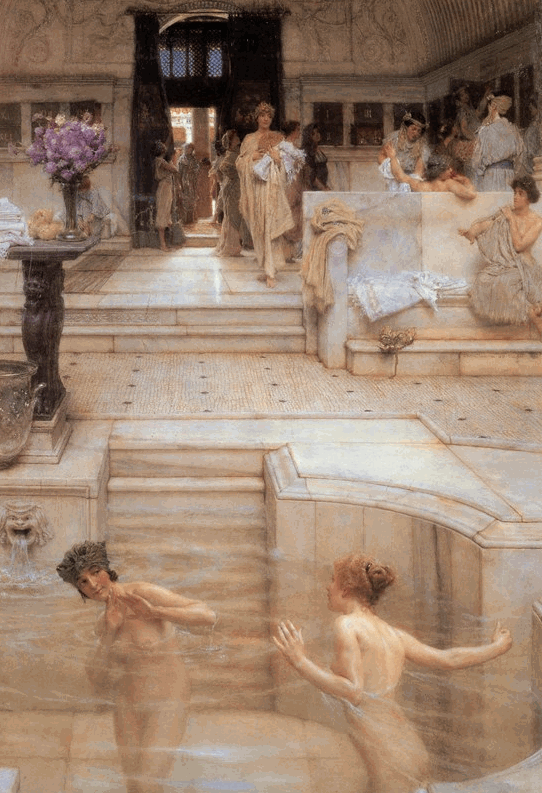
Public baths were a feature of ancient Greek towns but were usually limited to a series of hip-baths.
The Romans expanded the idea to incorporate a wide array of facilities and baths became common in even the smaller towns of the Roman world, where they were often located near the forum. In addition to public baths, wealthy citizens often had their own private baths constructed as a part of their villa and baths were even constructed for the legions of the Roman army when on campaign.
However, it was in the large cities that these complexes (balnea or thermae) took on monumental proportions with vast colonnades and wide-spanning arches and domes. Baths were built using millions of fireproof terracotta bricks and the finished buildings were usually sumptuous affairs with fine mosaic floors, marble-covered walls, and decorative statues.
Generally opening around lunchtime and open until dusk, baths were accessible to all.
Generally opening around lunchtime and open until dusk, baths were accessible to all, both rich and poor. In the reign of Diocletian, for example, the entrance fee was a mere two denarii – the smallest denomination of bronze coinage. Sometimes, on occasions such as public holidays, the baths were even free to enter.
Typical features (listed in the probable order bathers went through) were:
- apodyterium – changing rooms.
- palaestrae – exercise rooms.
- notatio – open-air swimming pool.
- laconica and sudatoria – superheated dry and wet sweating-rooms.
- calidarium – hot room, heated and with a hot-water pool and a separate basin on a stand (labrum)
- tepidarium – warm room, indirectly heated and with a tepid pool.
- frigidarium – cool room, unheated and with a cold-water basin, often monumental in size and domed, it was the heart of the baths complex.
- rooms for massage and other health treatments.
Additional facilities could include cold-water plunge baths, private baths, toilets, libraries, lecture halls, fountains, and outdoor gardens.
Early baths were heated using braziers, but from the 1st century BCE more sophisticated heating systems were used such as under-floor (hypocaust) heating fuelled by wood-burning furnaces (prafurniae).
This was not a new idea as Greek baths also employed such a system but, as was typical of the Romans, they took an idea and improved upon it for maximum efficiency.
The huge fires from the furnaces sent warm air under the raised floor (suspensurae) which stood on narrow pillars (pilae) of solid stone, hollow cylinders, or polygonal or circular bricks. The floors were paved over with 60 cm square tiles (bipedales) which were then covered in decorative mosaics.
The vast amount of water needed for the larger baths was supplied by purpose built aqueducts and regulated by huge reservoirs in the baths complex. The reservoir of the Baths of Diocletian in Rome, for example, could hold 20,000 m³ of water. Water was heated in large lead boilers fitted over the furnaces. The water could be added (via lead pipes) to the heated pools by using a bronze half-cylinder (testudo) connected to the boilers. Once released into the pool the hot water circulated by convection.
The Egyptian Widow
It wasn’t just Rome that the artist favored. He was interesting in ancient Greece, and Egypt as well. Here we see his marvelous attention to detail in his depiction of a grieving widow at the death of her husband. No one can depict the past like artist Lawrence Alma-Tadema could.
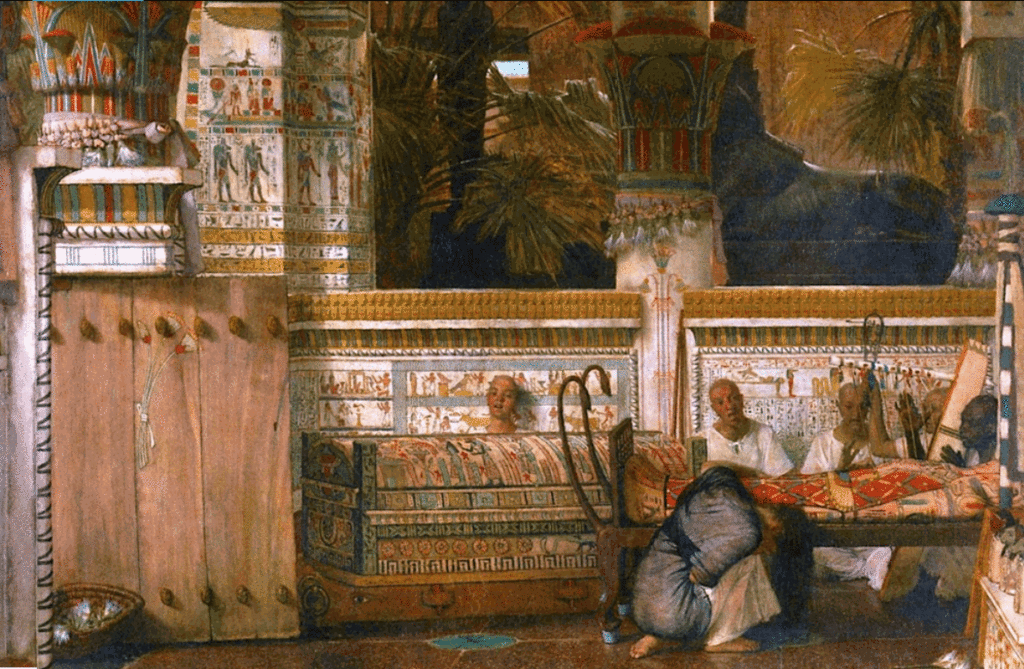
The Frigidarium
A frigidarium is a large cold pool at the Roman baths.When entering the bath house, one would go through the apodyterium, where they would store their clothes.After the caldarium and the tepidarium, which were used to open the pores of the skin, the frigidarium would be reached. The cold water would close the pores, however, hot water will open them. -Frigidarium - Wikipedia
In this painting we see a woman dressing and attending to a bather of a Roman frigidarium. We can well imagine the attendants that would maintain this structure. As the cool water is pumped or flows from icy mountain springs, the area within the complex must have been cool and relaxing from the hot Italian Summer climate.
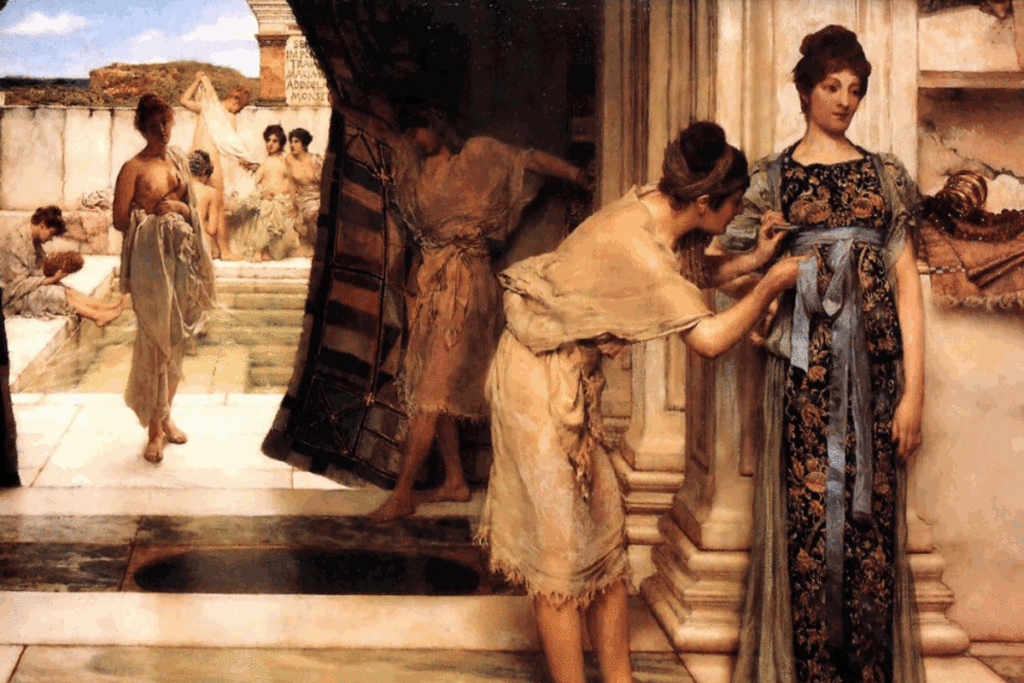
Another Opinion.
Not everyone sees value in fine art.
They consider it old, out-dated and obsolete.
It’s not “hip”, modern and “progressive”. So to add some balance and appreciation, here’s come work by one of the hottest artists in America today; Cy Twombly. His works easily reach millions of dollars each. And as a result he has become famous, and well regarded thorough out the art world.
Here’s one of his multi-million dollar masterpieces…

And, if that doesn’t evoke any emotions within you, perhaps this “piece” might… I am told that it evokes the childlike simplicity of complex undercurrents in modern contemporaneous thought…

Or this “ground breaking” and “stunning” work…

Do you want more?
I have more posts in my Art Index here…
ARTArticles & Links
You’ll not find any big banners or popups here talking about cookies and privacy notices. There are no ads on this site (aside from the hosting ads – a necessary evil). Functionally and fundamentally, I just don’t make money off of this blog. It is NOT monetized. Finally, I don’t track you because I just don’t care to.
To go to the MAIN Index;
Master Index.
- You can start reading the articles by going HERE.
- You can visit the Index Page HERE to explore by article subject.
- You can also ask the author some questions. You can go HERE .
- You can find out more about the author HERE.
- If you have concerns or complaints, you can go HERE.
- If you want to make a donation, you can go HERE.
Please kindly help me out in this effort. There is a lot of effort that goes into this disclosure. I could use all the financial support that anyone could provide. Thank you very much.
[wp_paypal_payment]

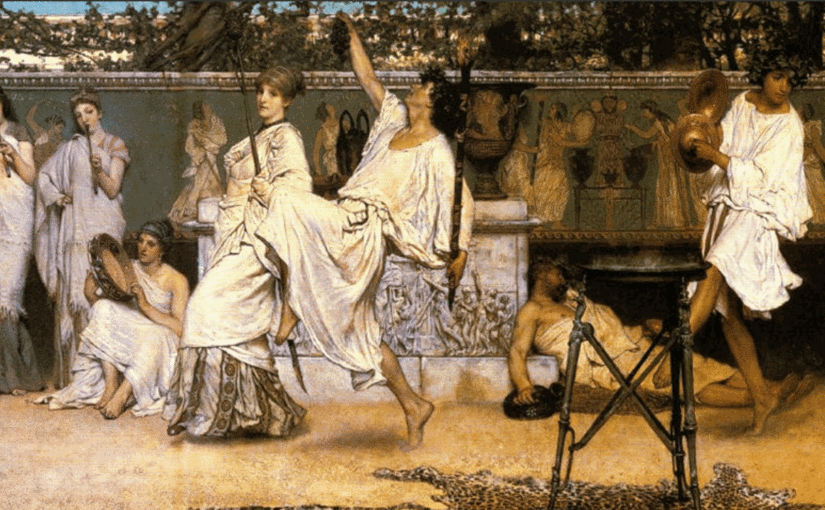

MM, it’s one thing looking at wonderful pictures like alma tadema’s paintings above, but when you give the context and historical drama behind these pictures, especially the roman emperor and, cleopatra, it is just stupendously beautiful and meaningful. In the future, when I look at great historical art like these, i’ll be reading the historical dramas about it. WIll read this again and again. Just wonderful. Hope you got my message of support. THanks,MM!
Thank you for that. Some artists paint beautiful works that often revolve around complex stories that the average person today hasn’t a clue about. But when you read about what the painting was about and then look at the art, you truly begin to really appreciate the sum total of the art.